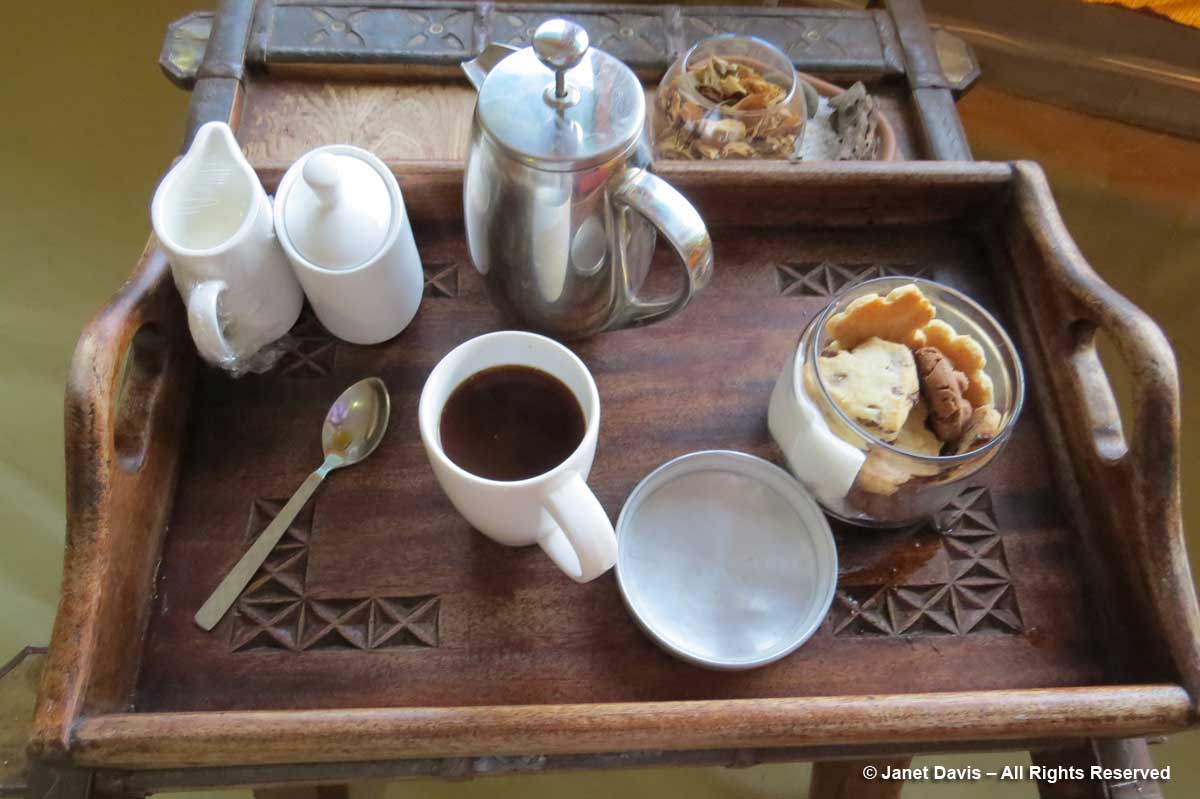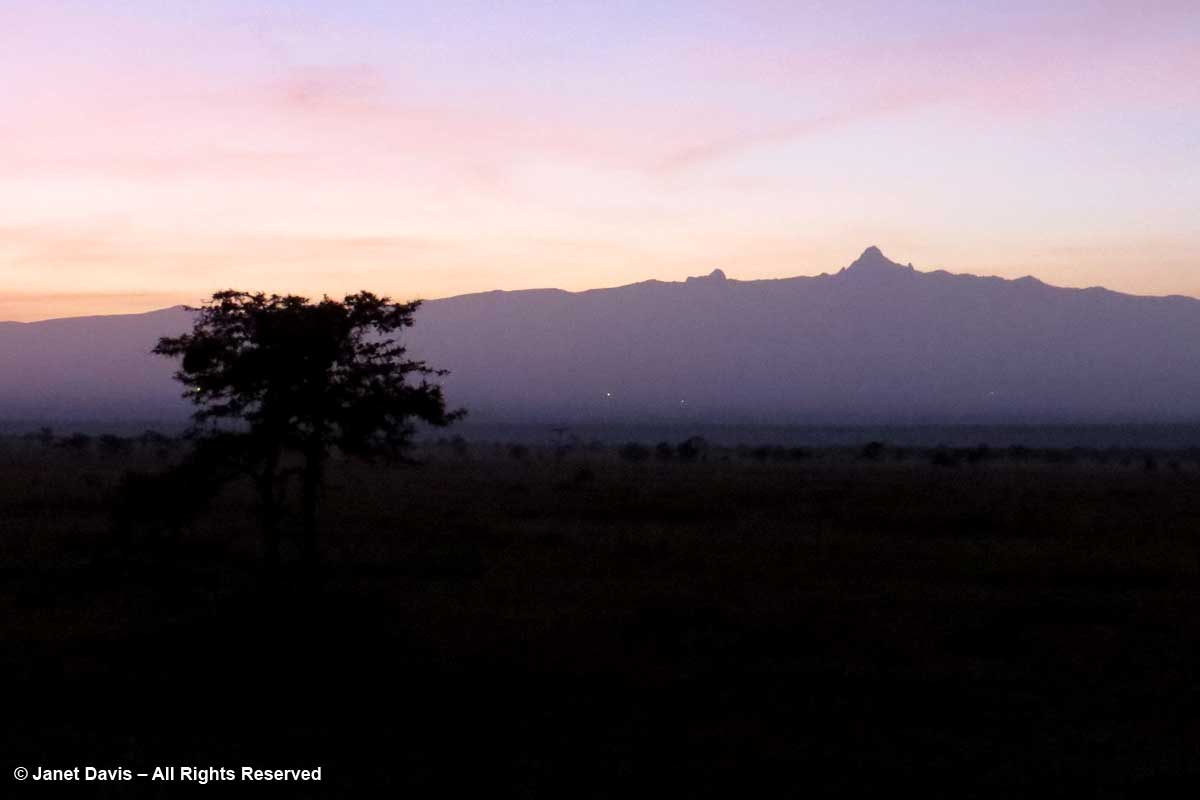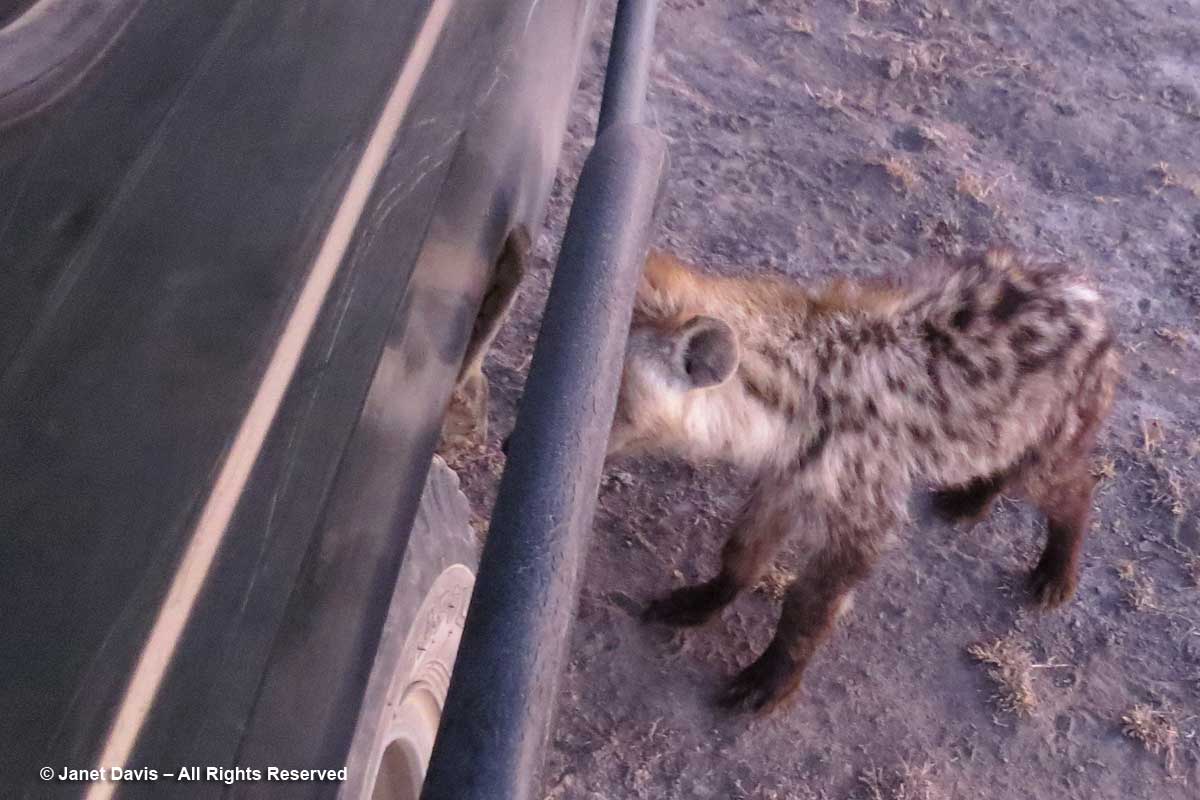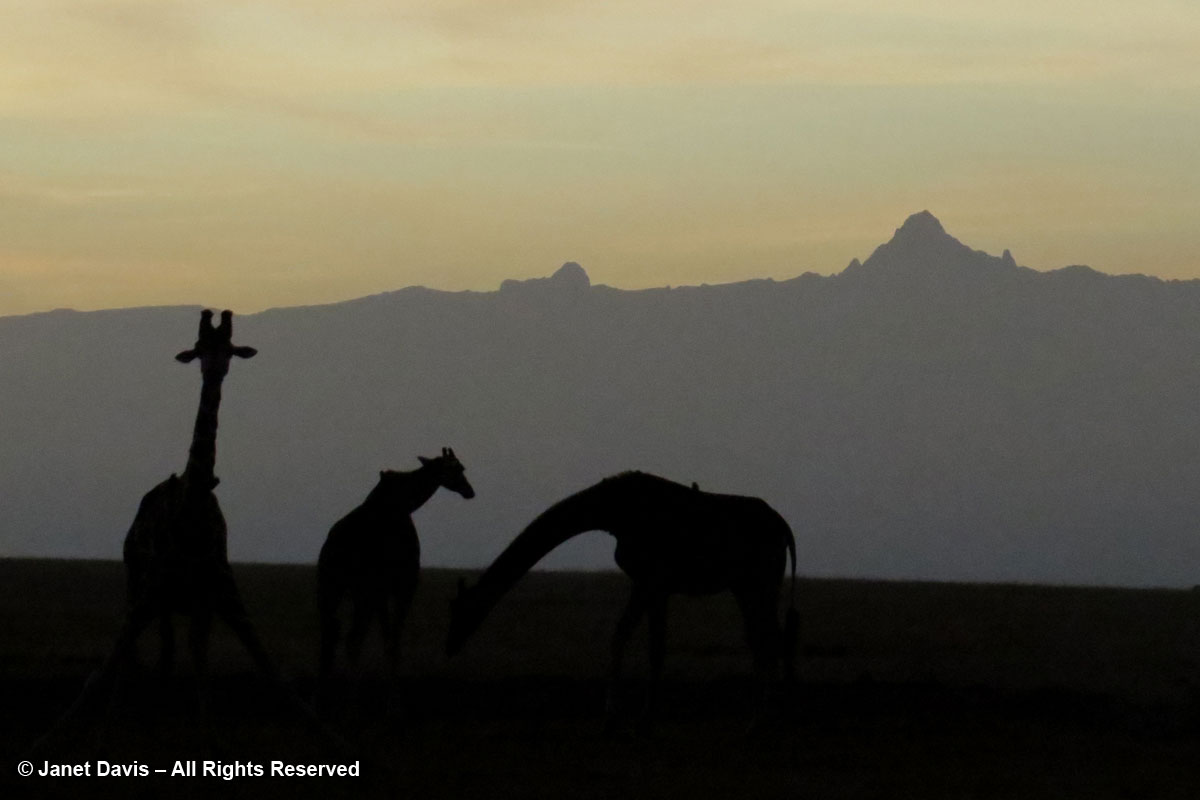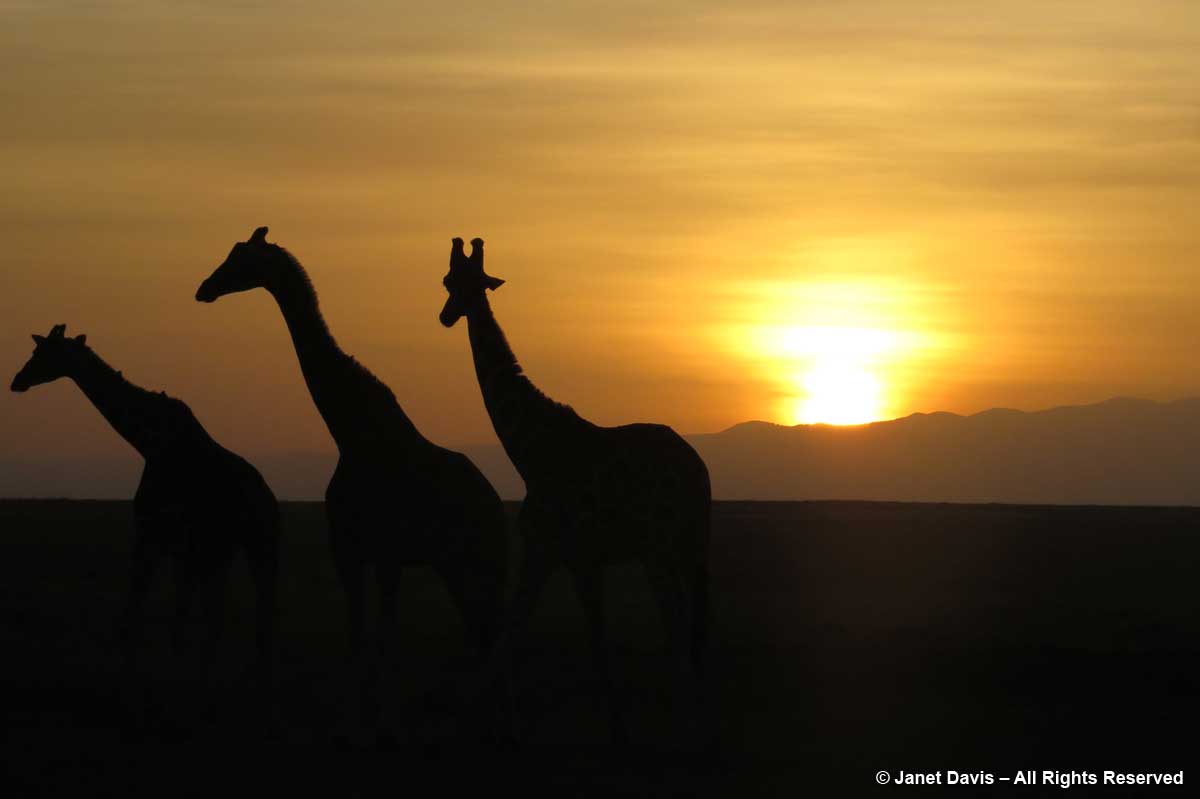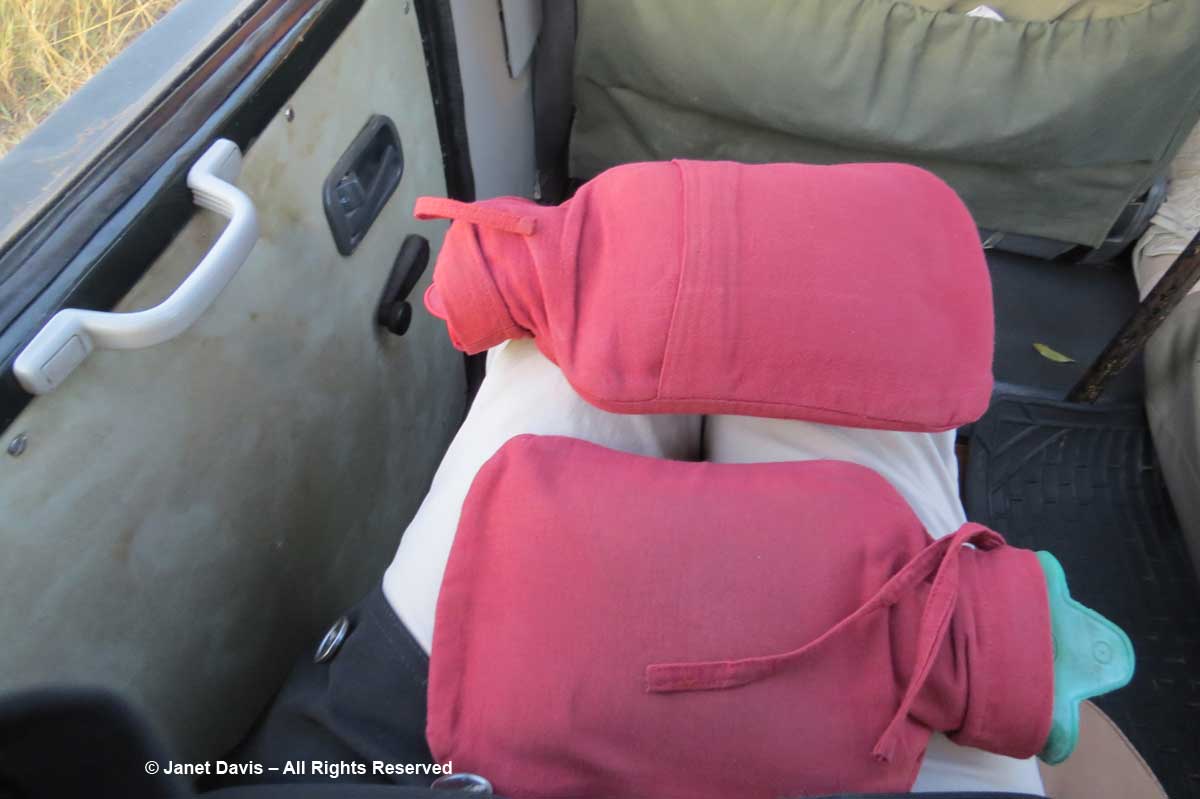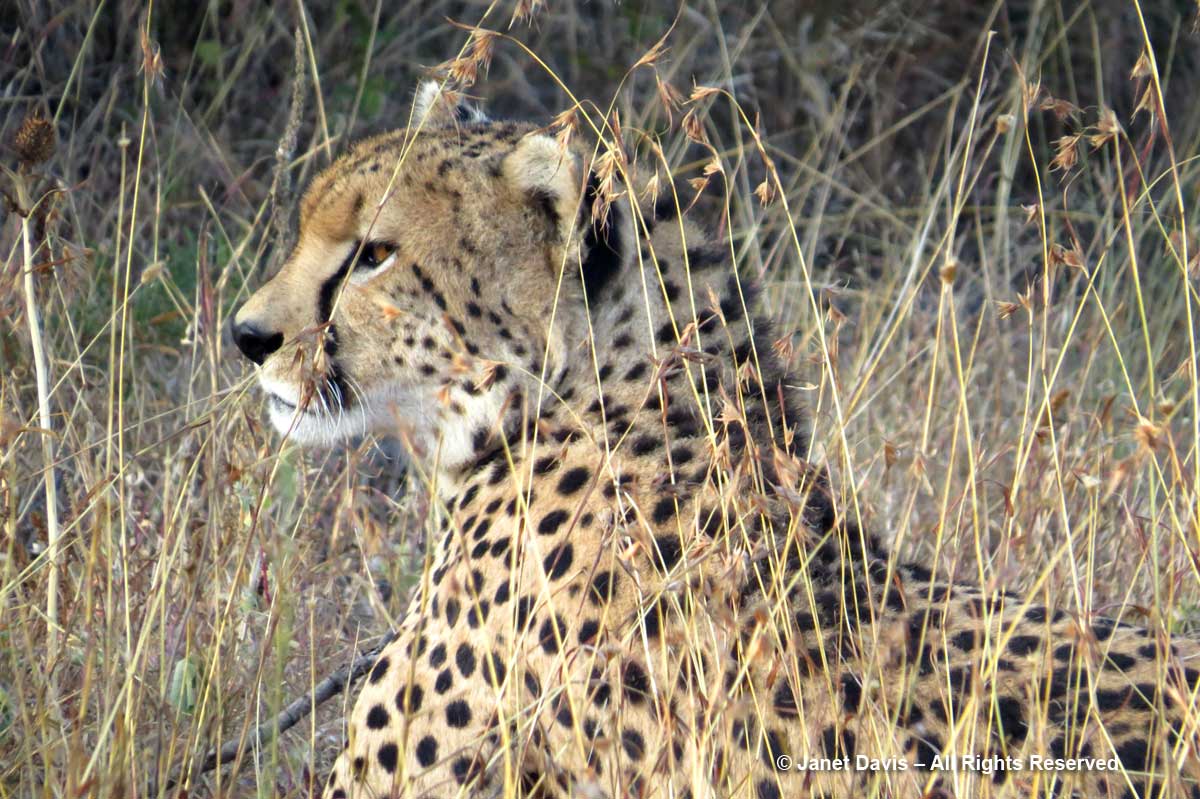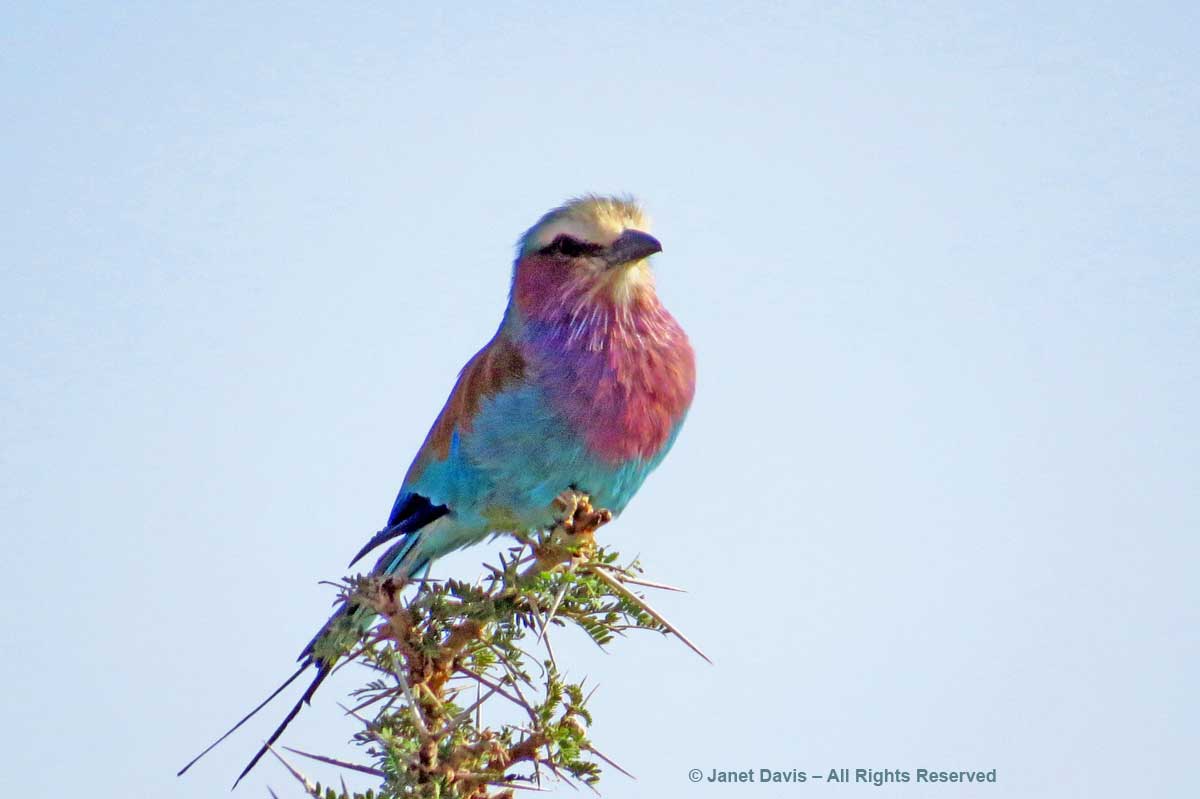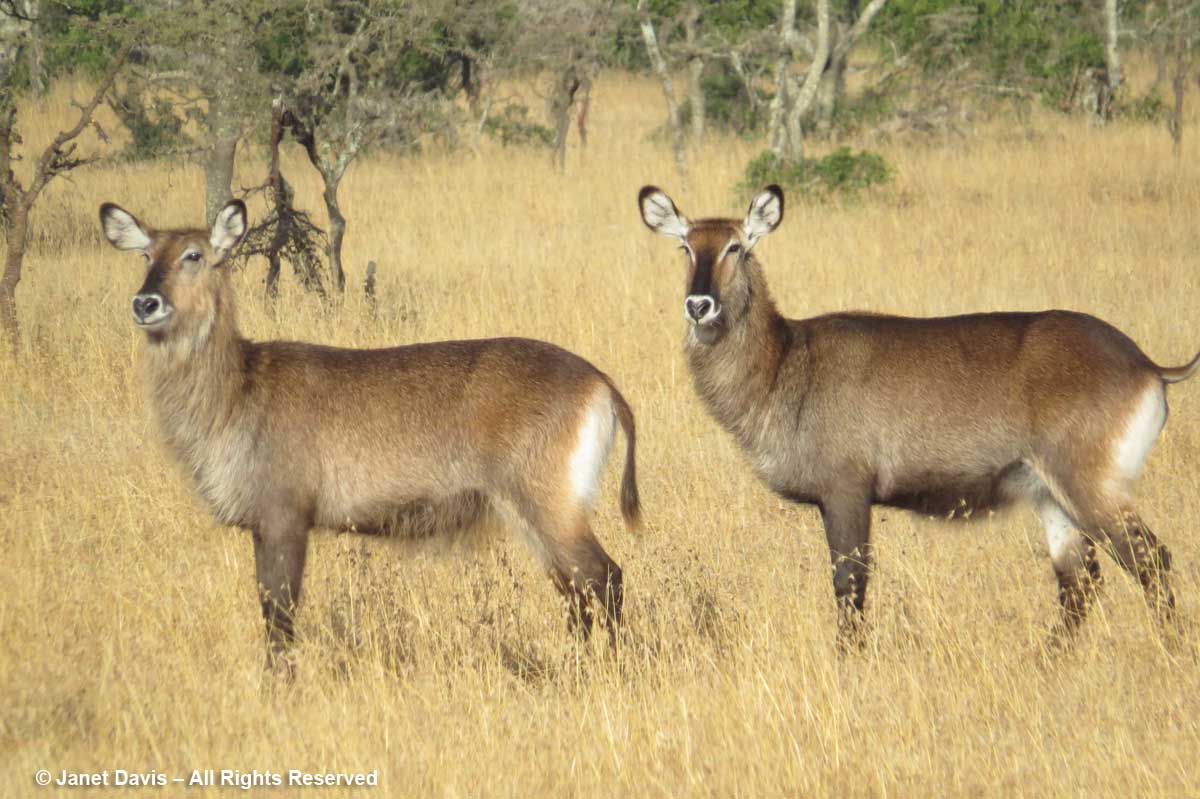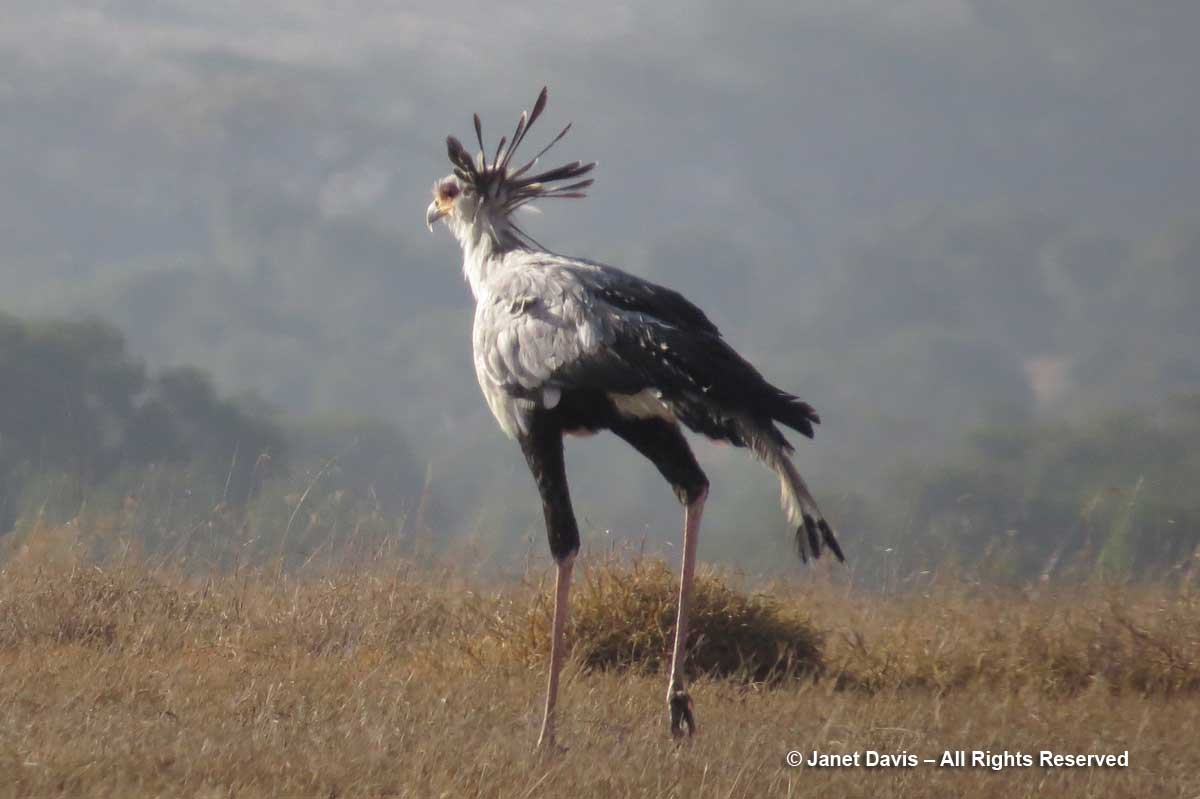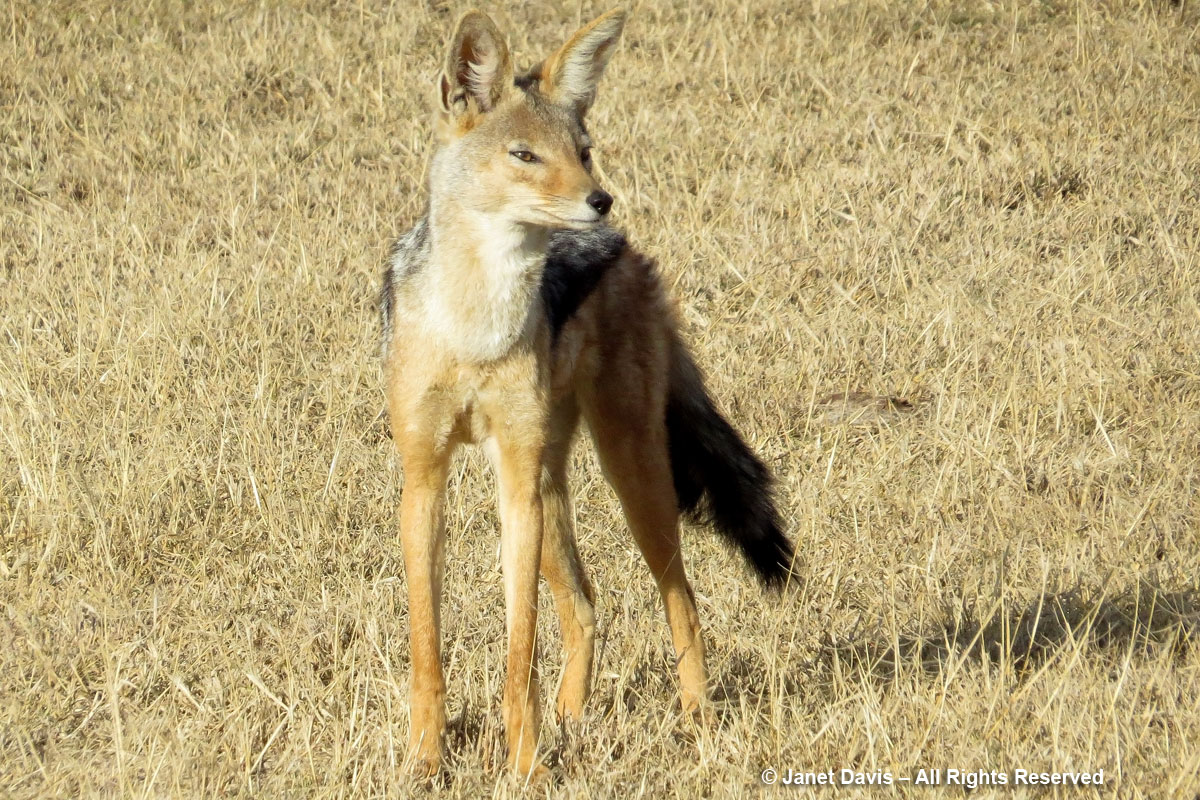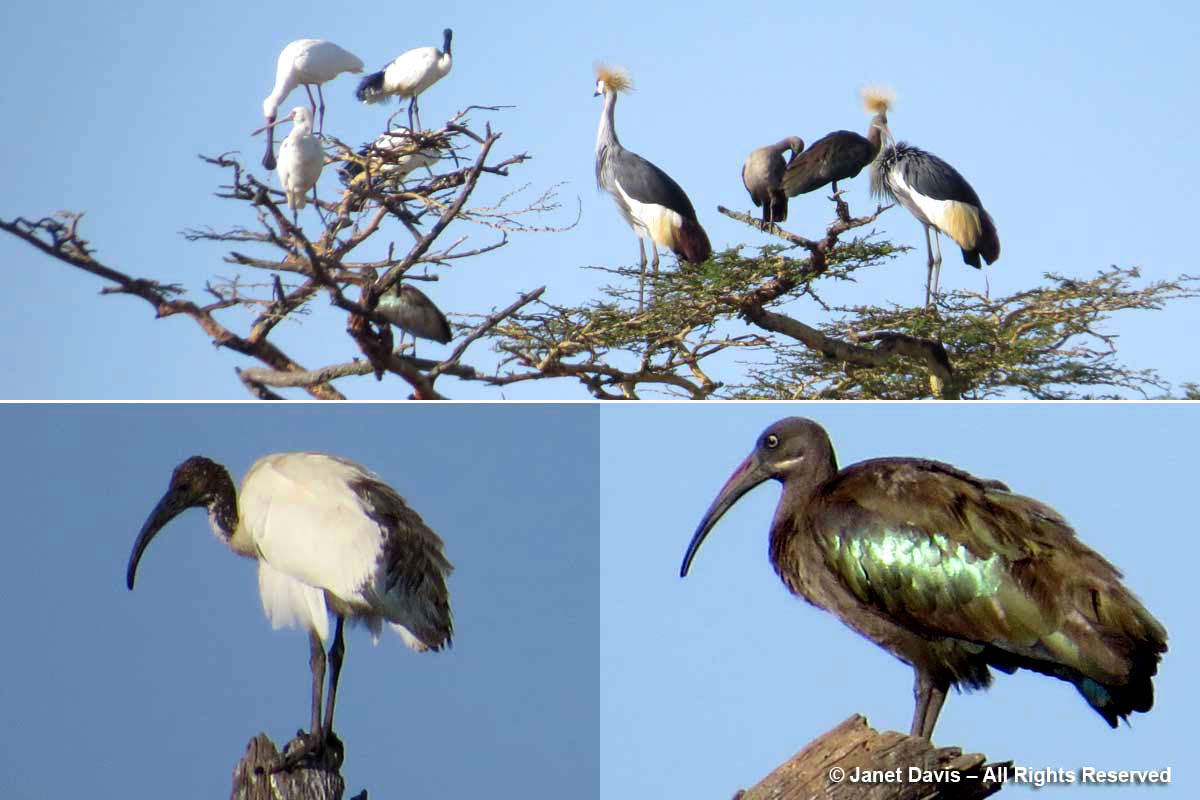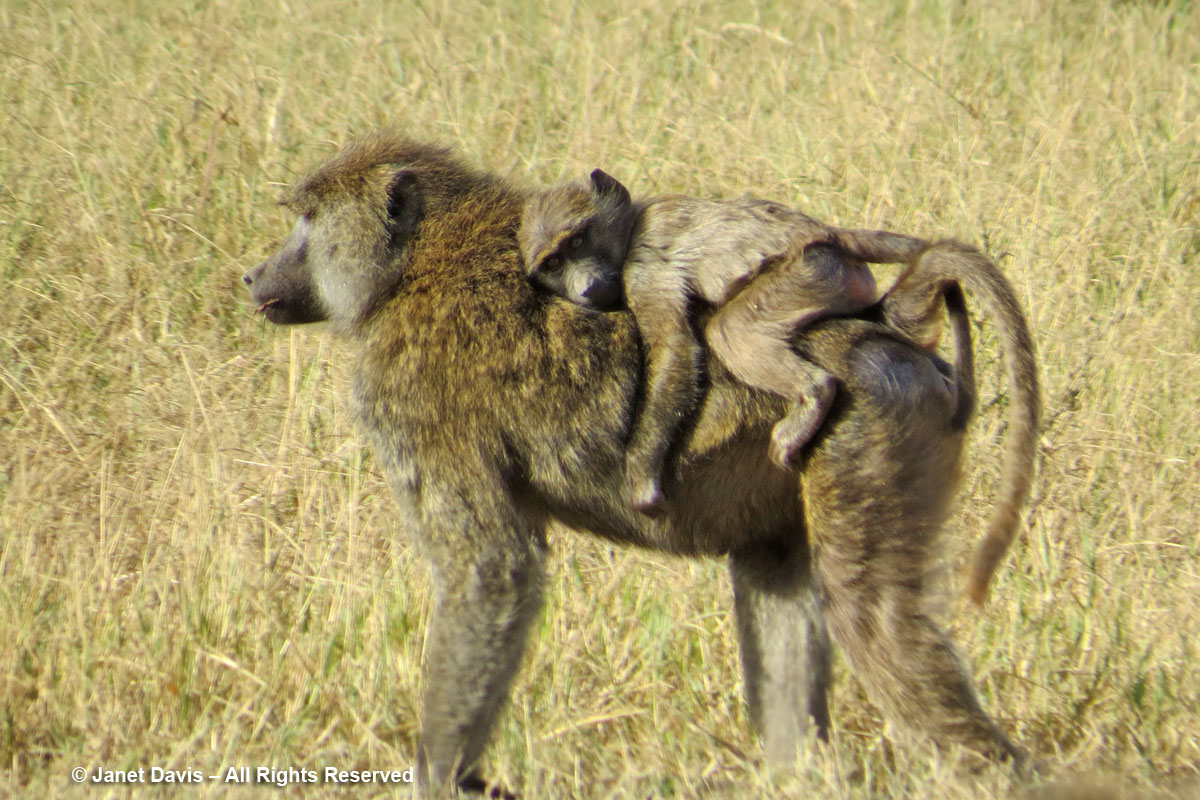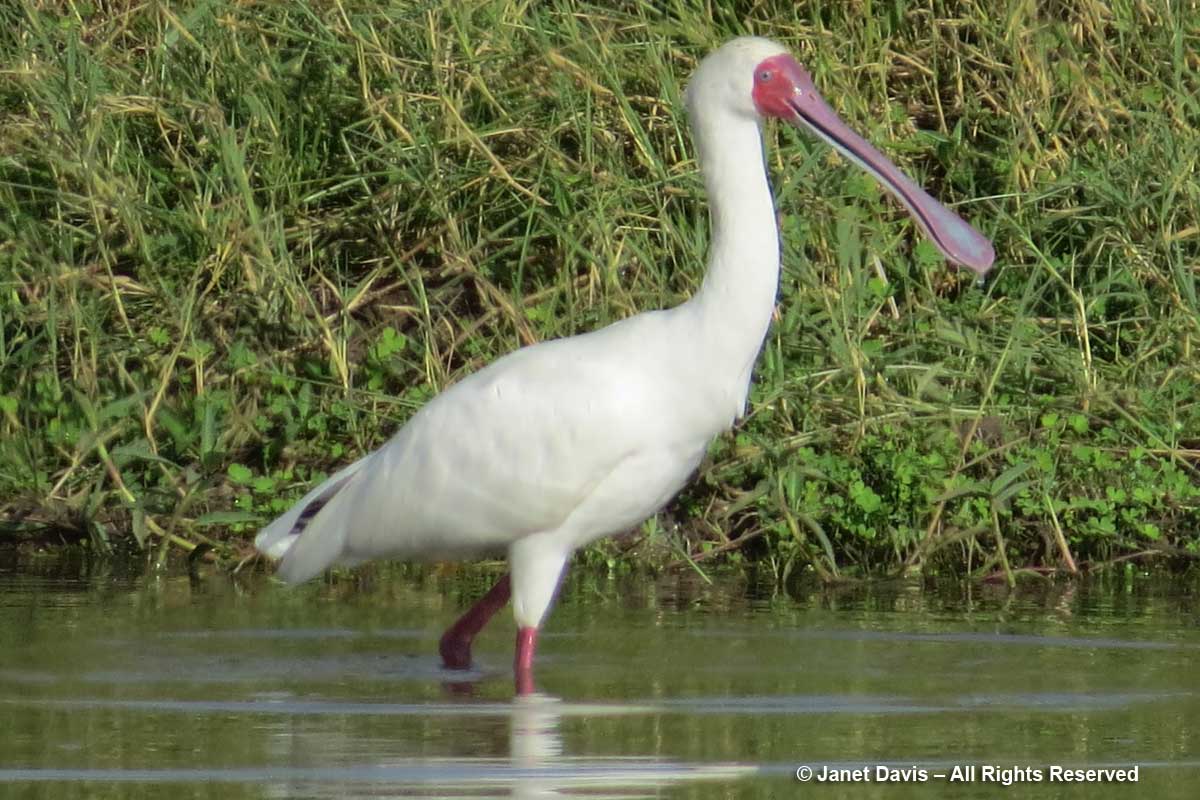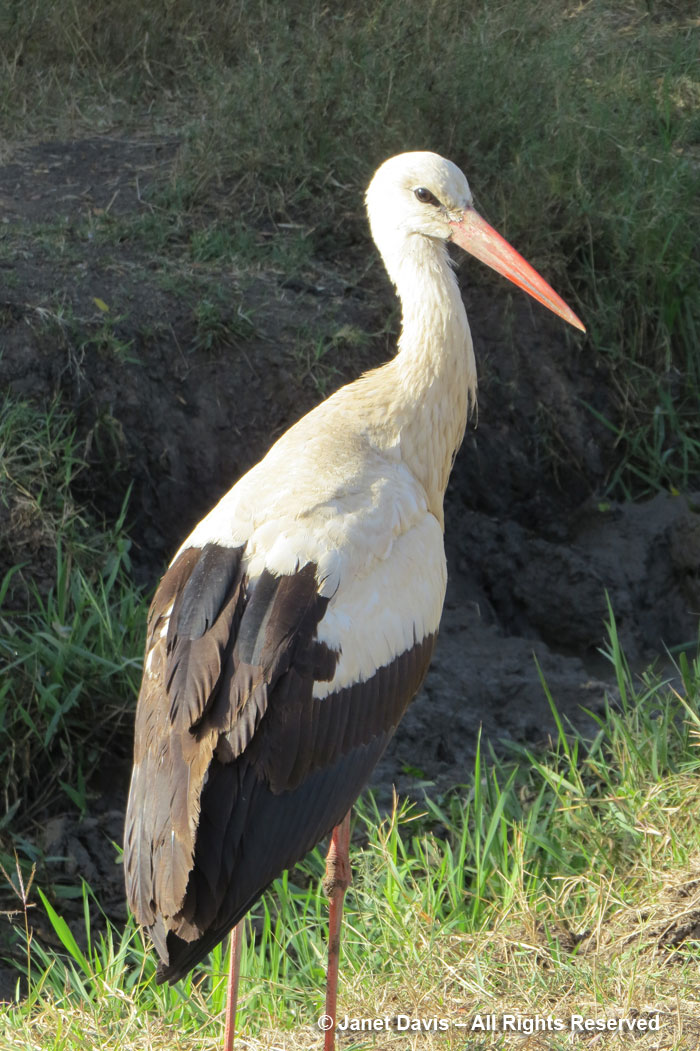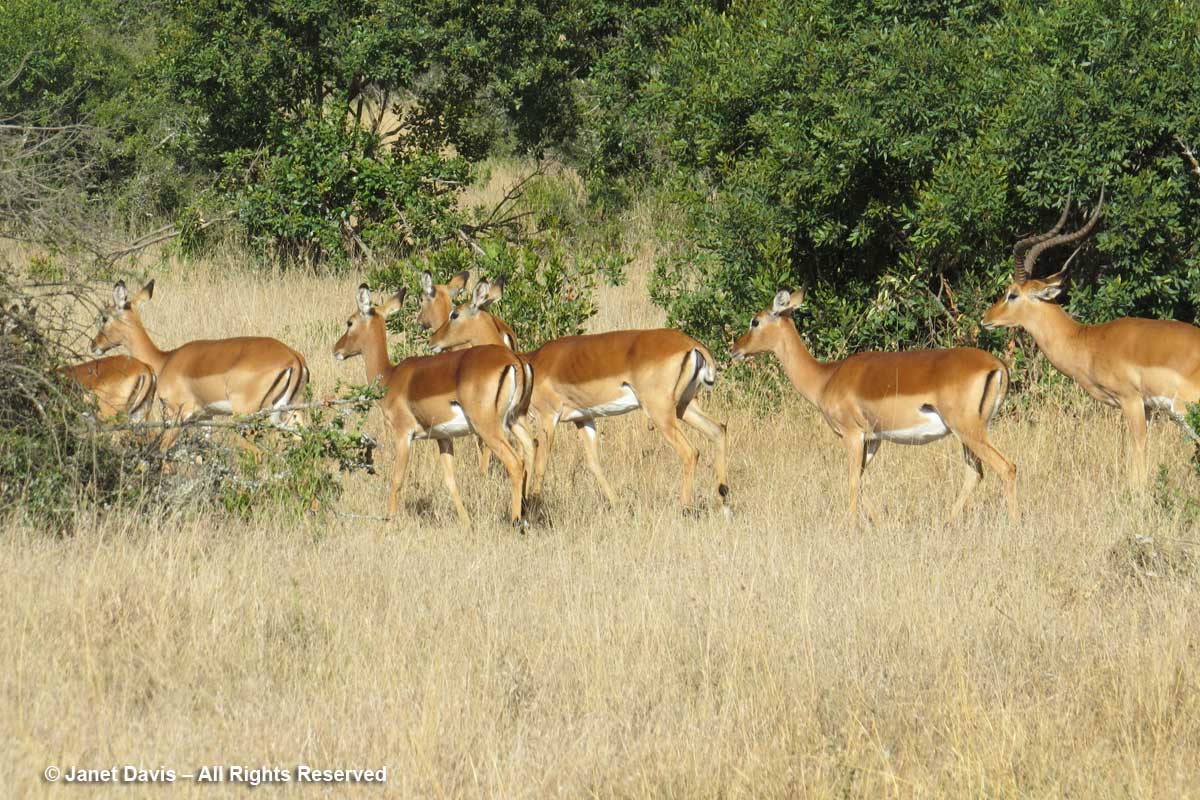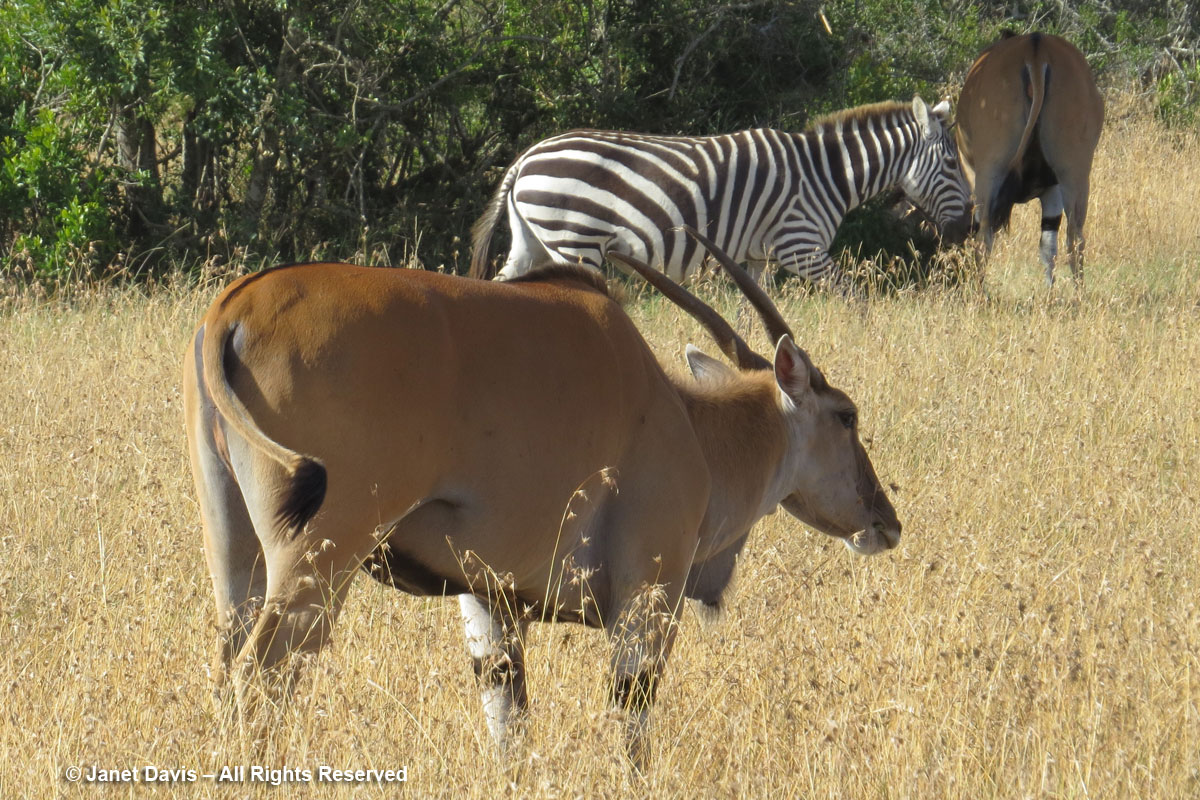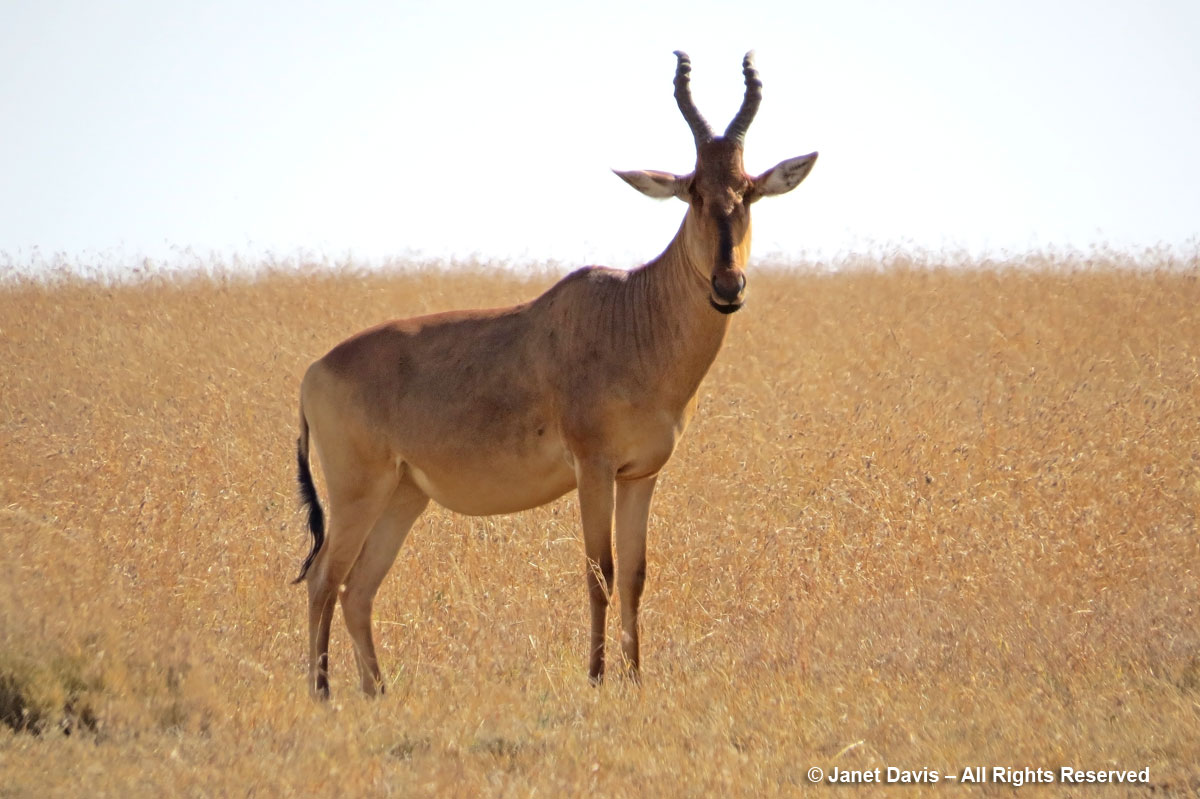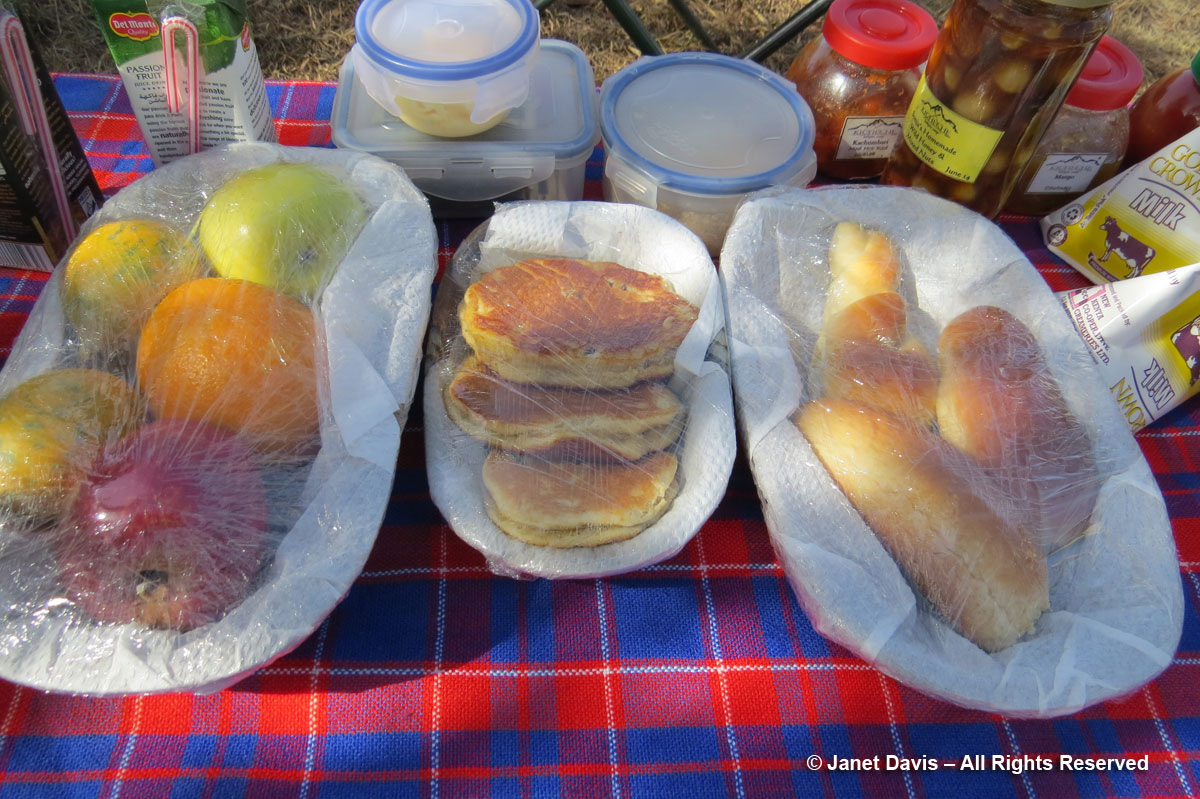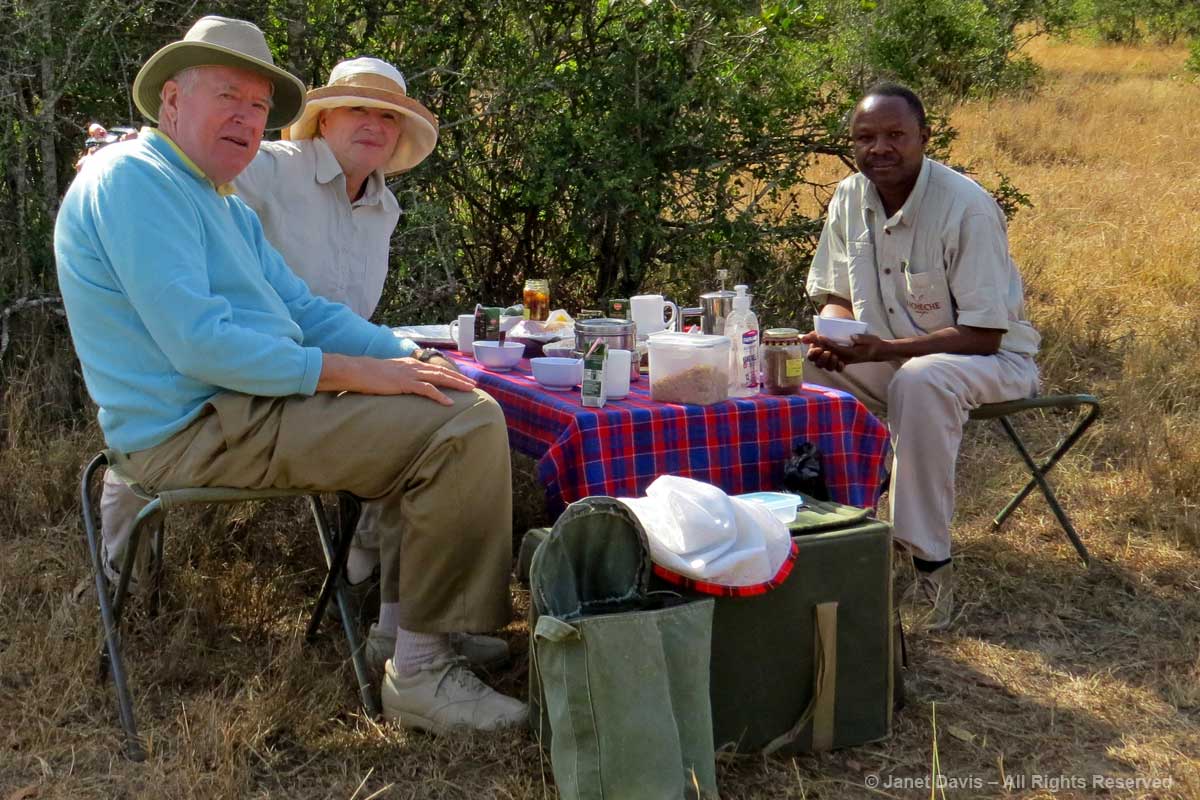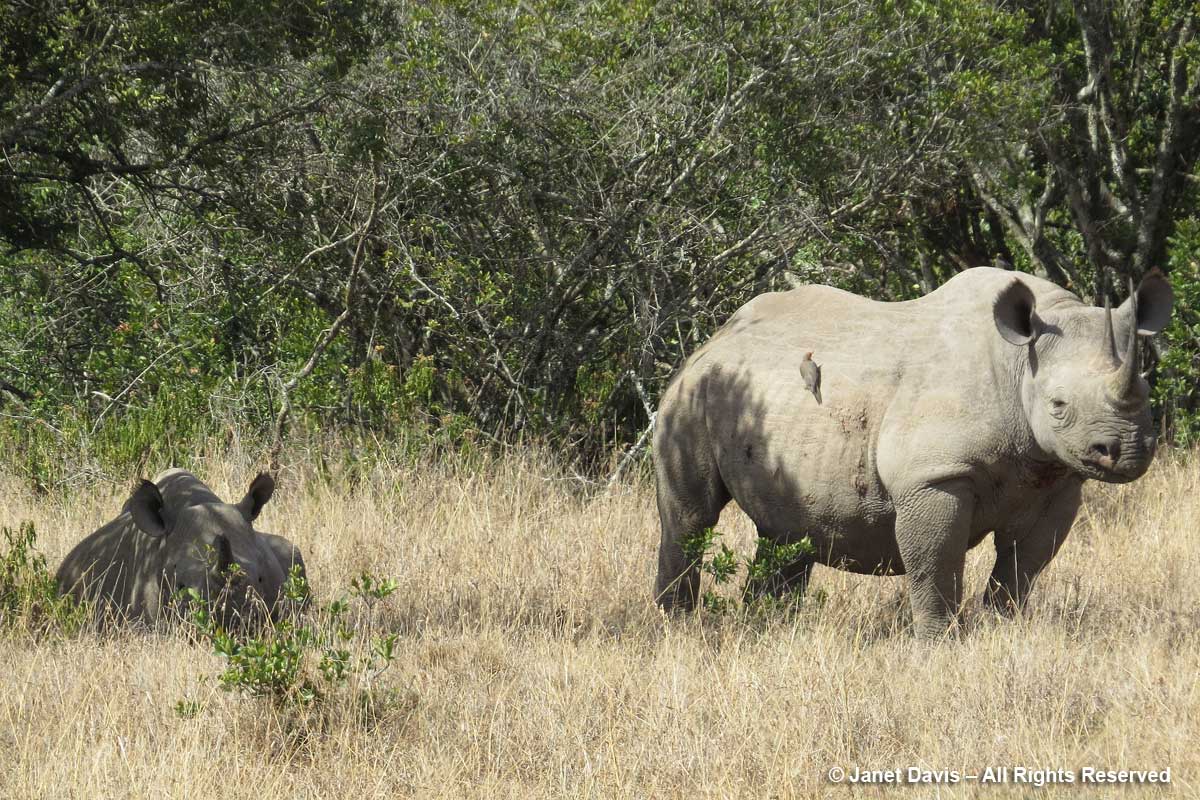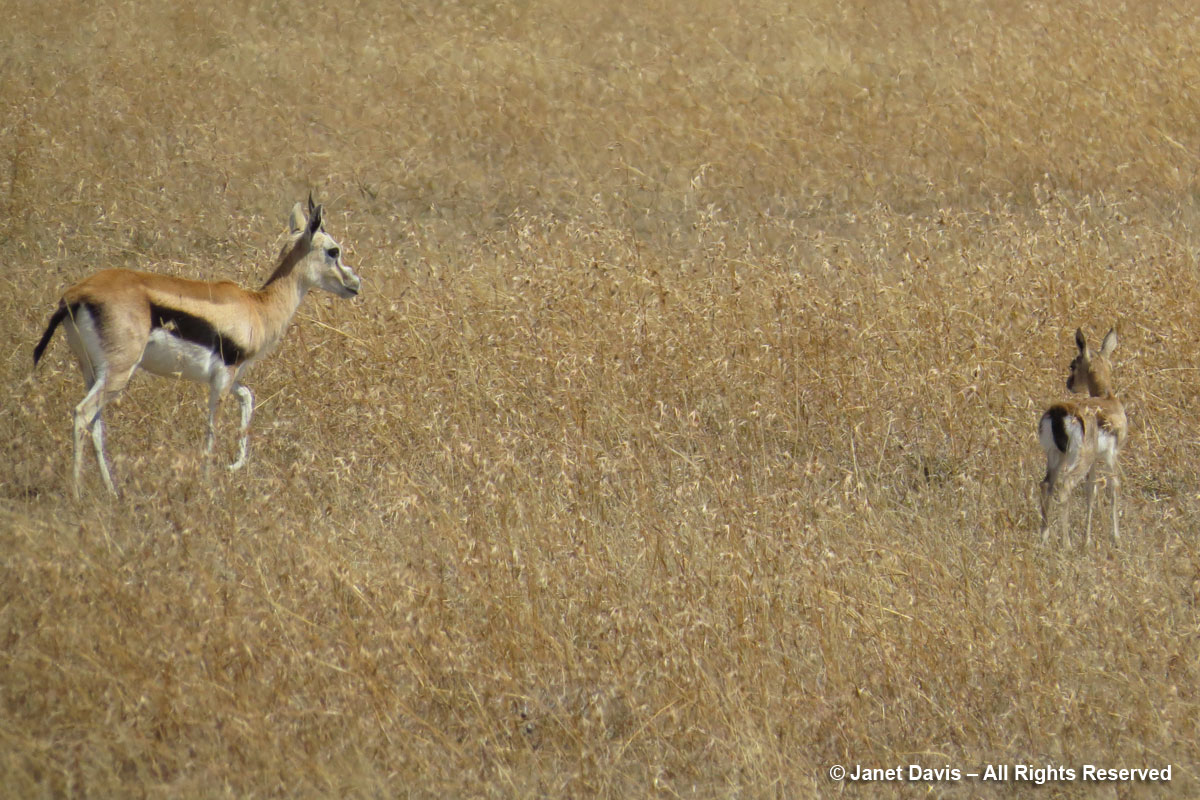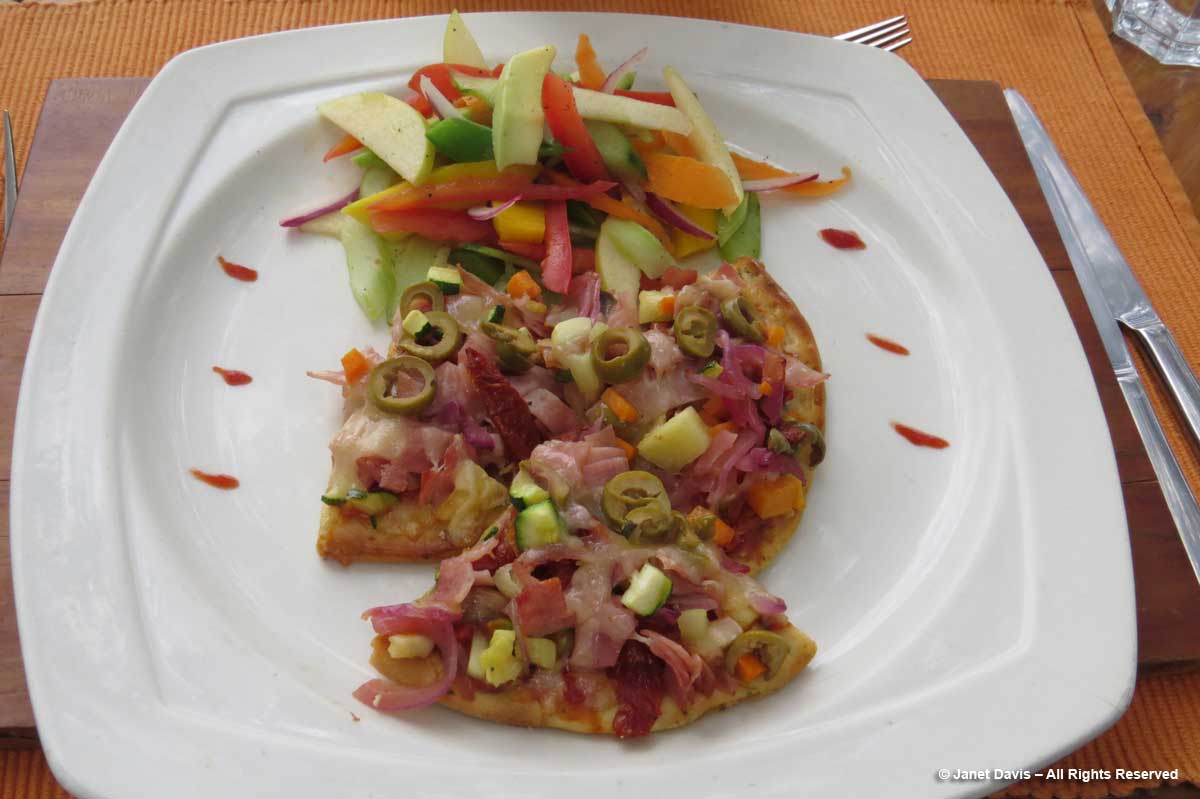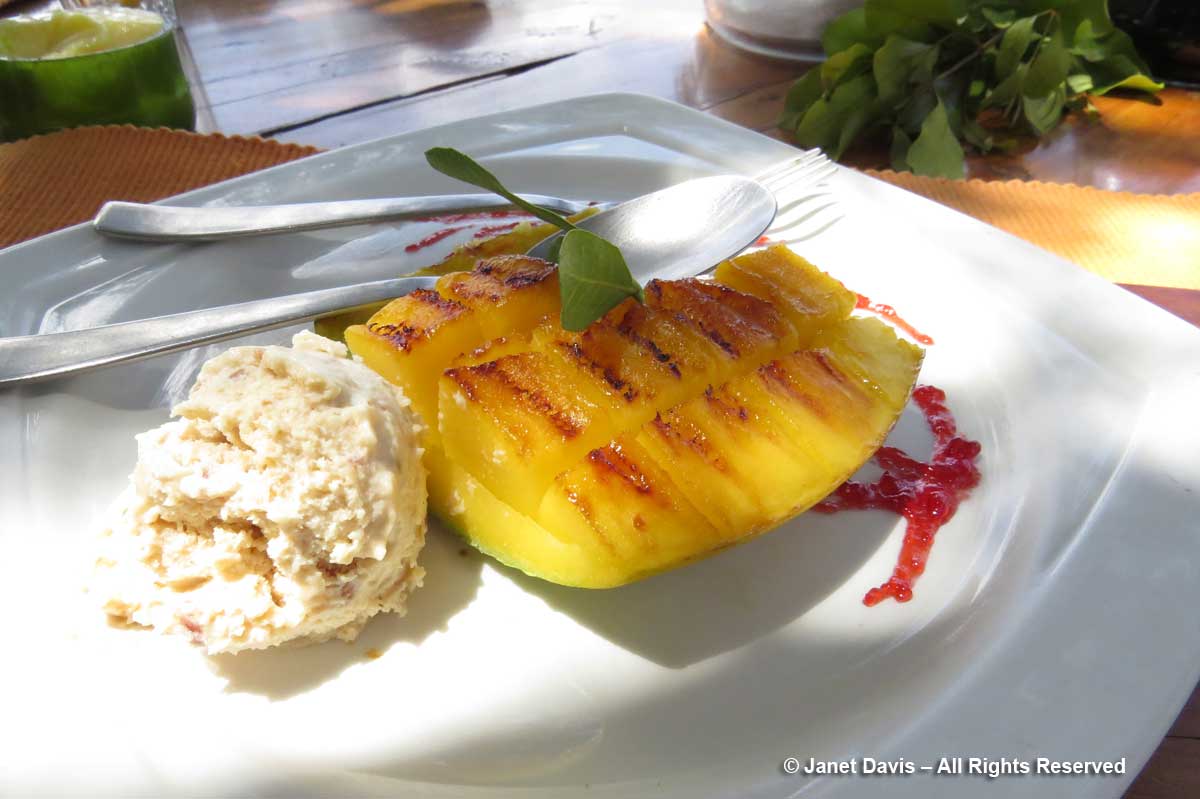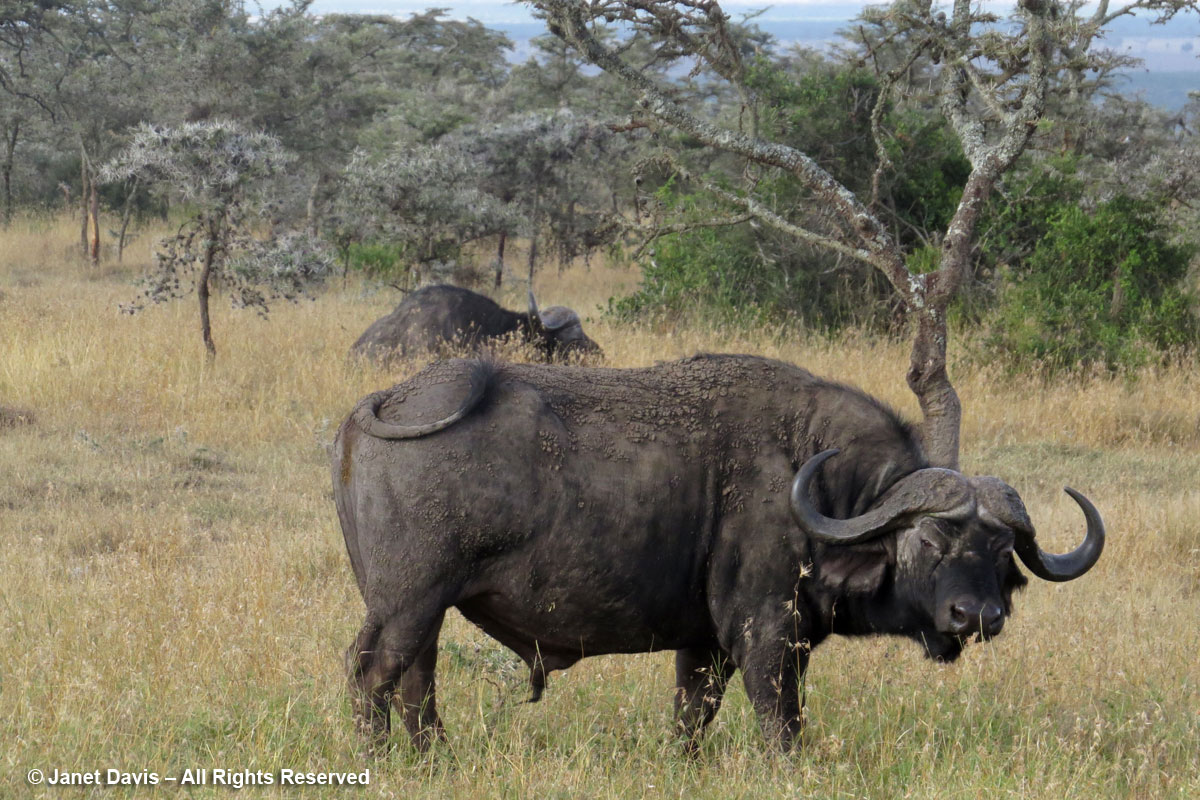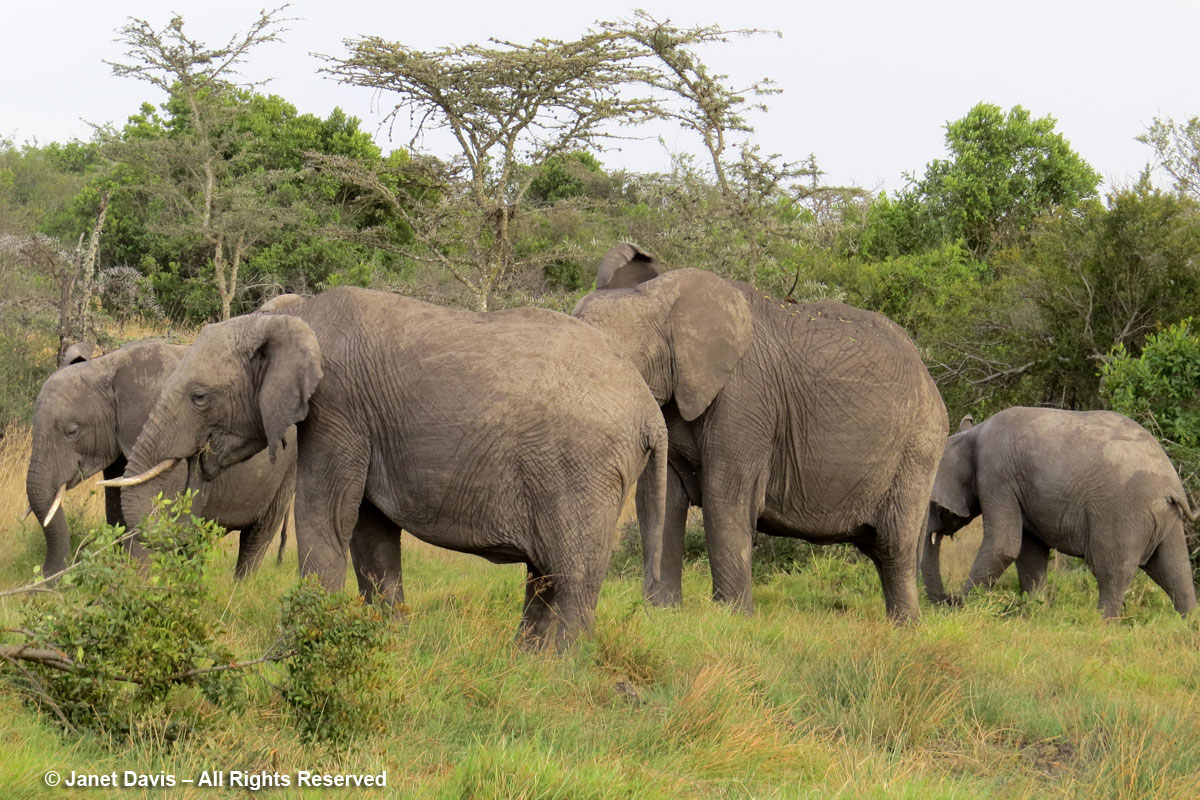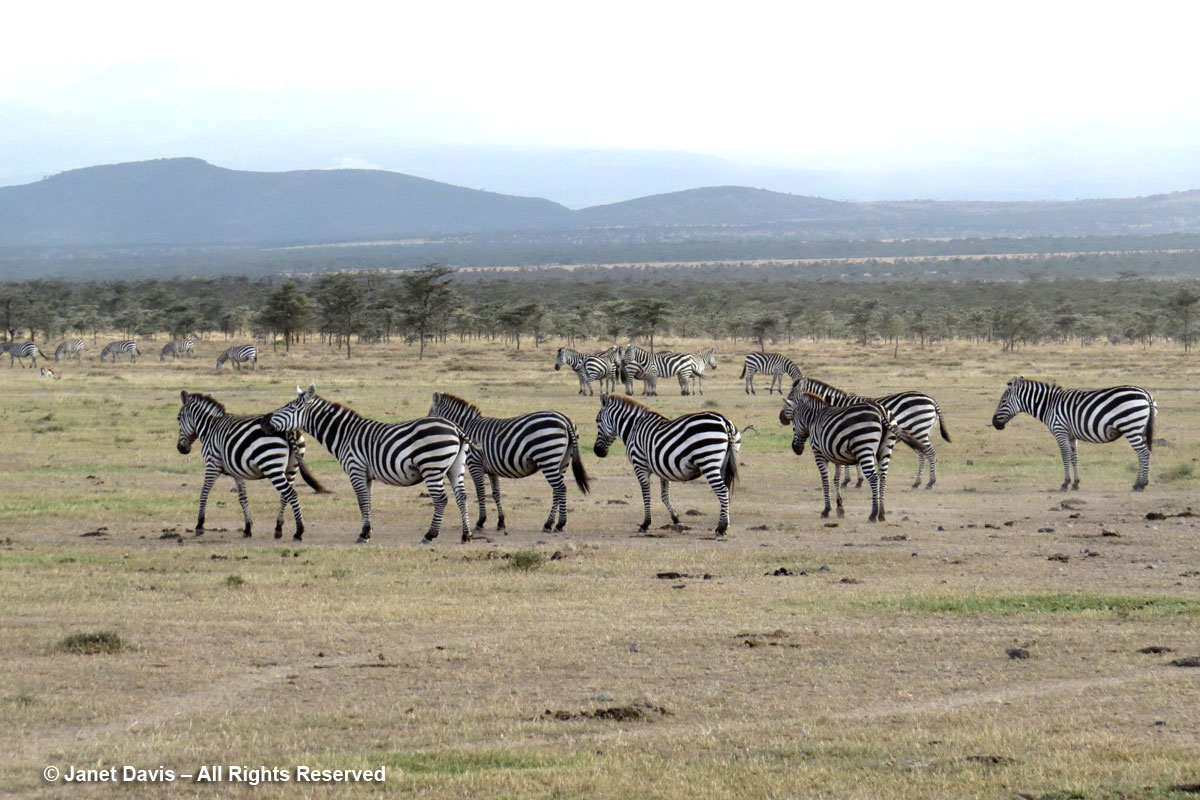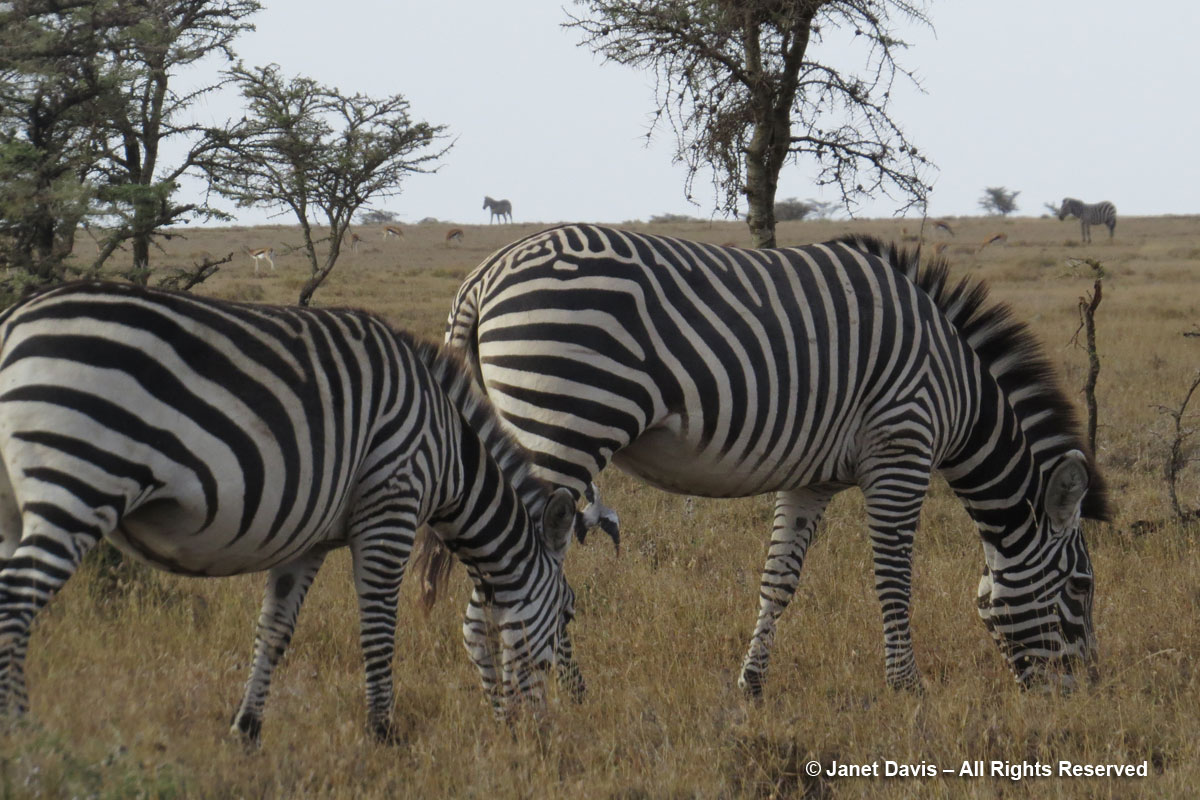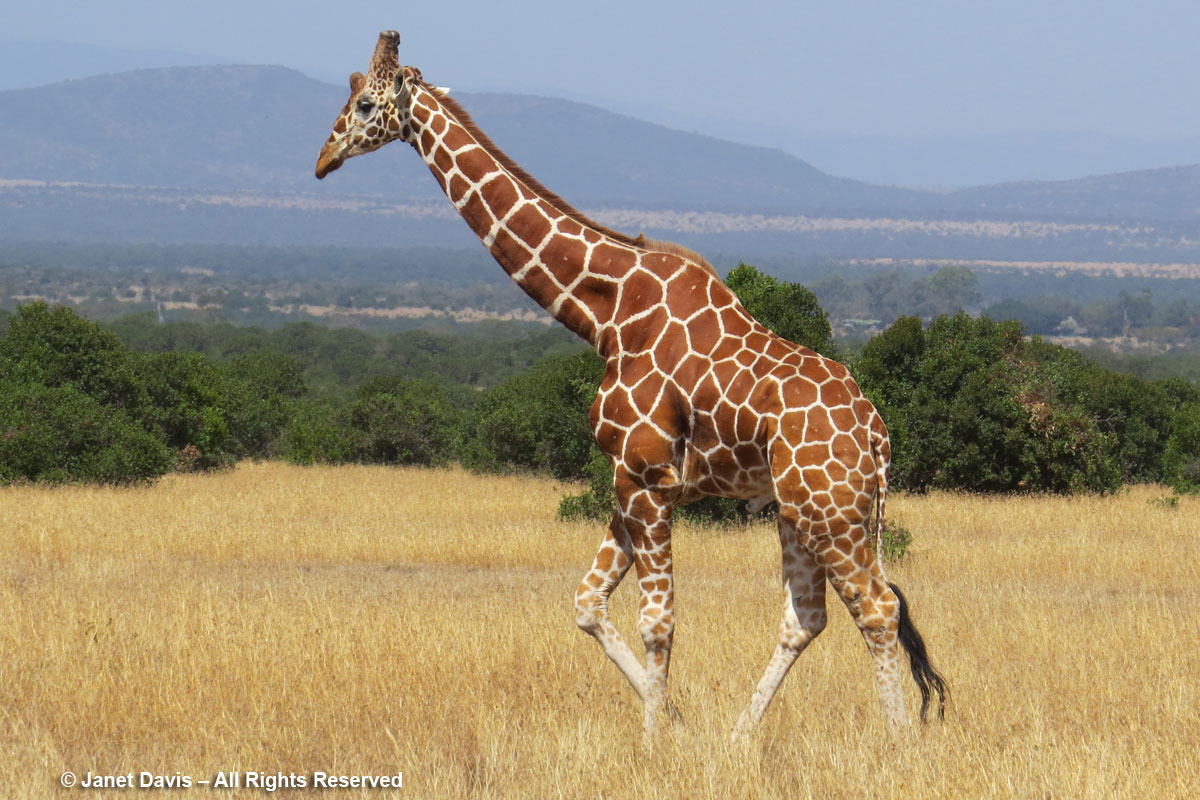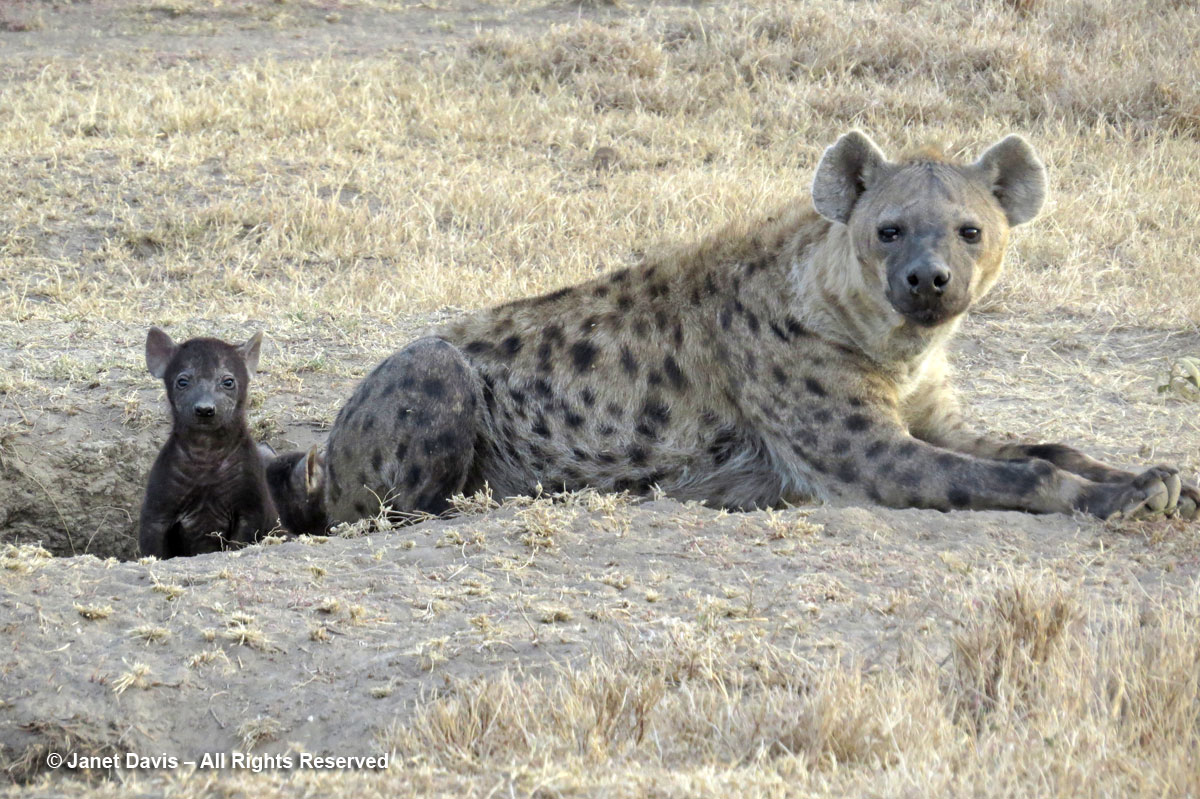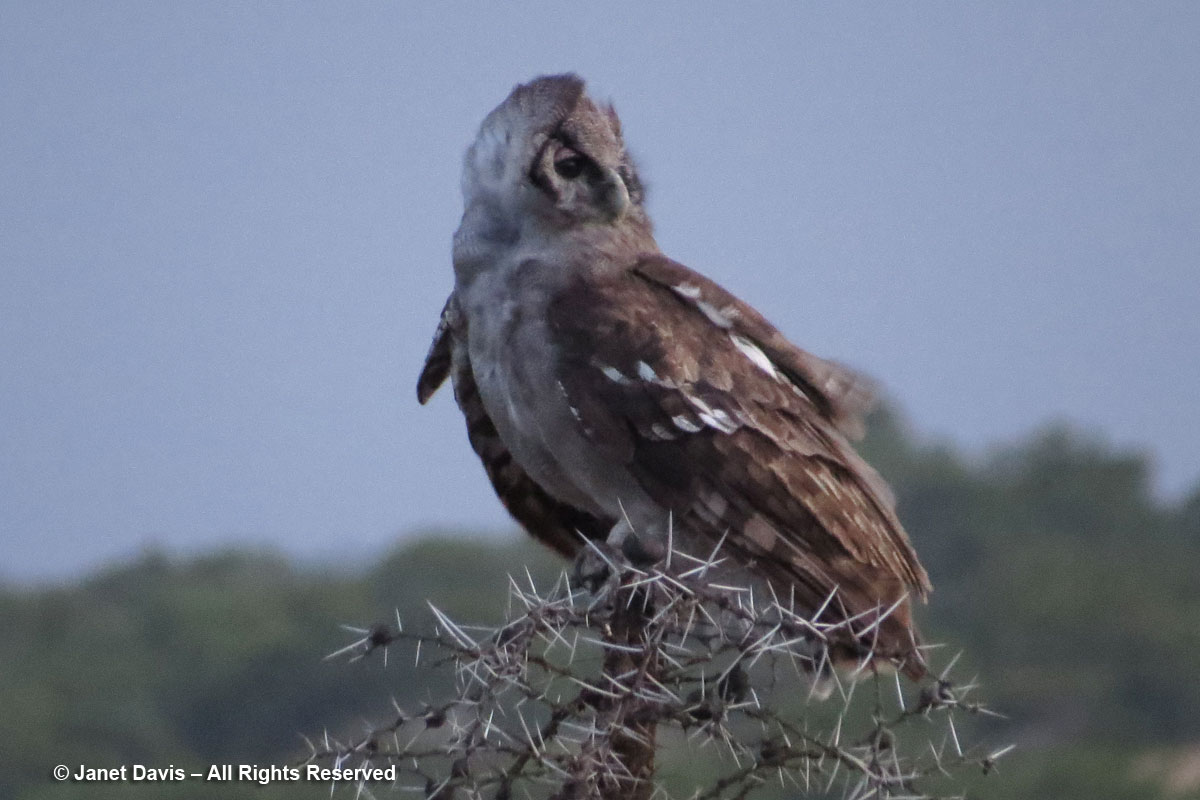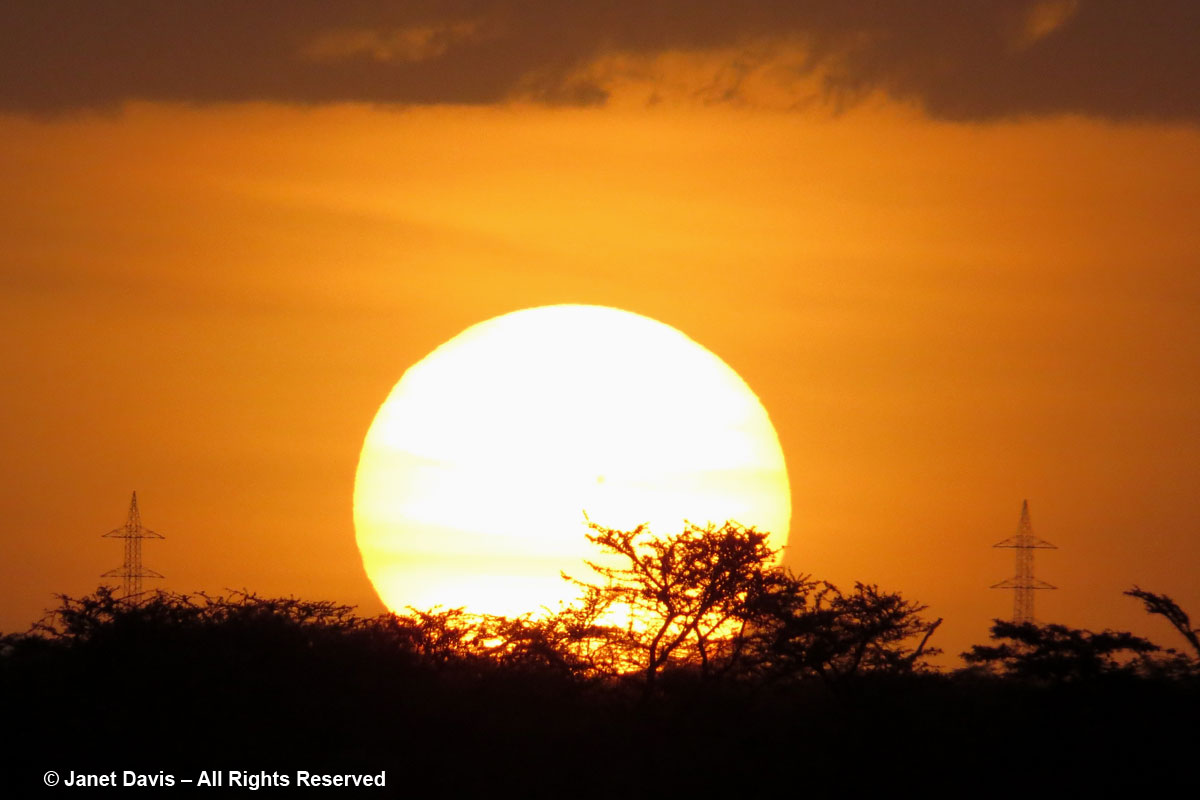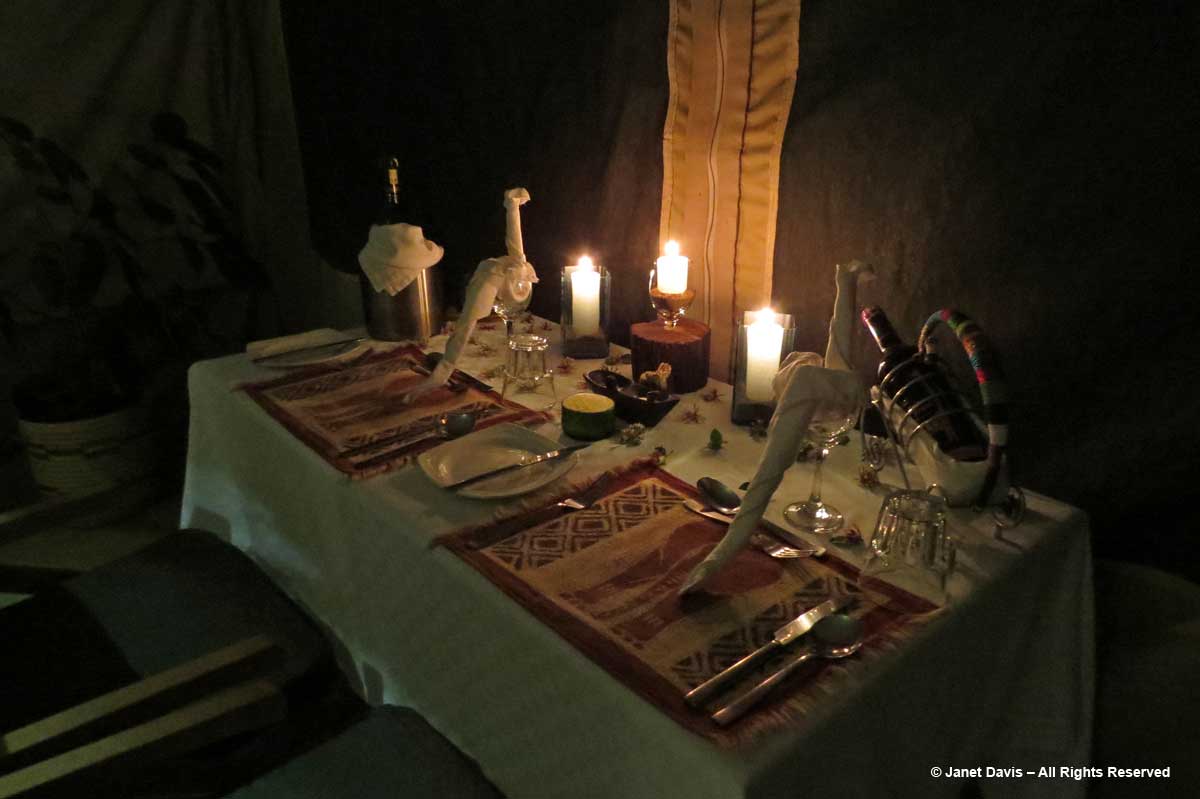After our initial game drive yesterday on our arrival at Kicheche Laikipia from Lewa, we’re almost eager to rise-and-shine as we hear “Good morning, Jambo!” from the darkness outside our tent. We unzip the flap and greet our pre-dawn messenger, who places a tray with coffee and biscuits on a low table.
There’s no time to shower now, just a fast wash before dressing in layers of clothes to keep us warm (it’s barely 50F-10C outside), gulping the coffee, and heading down the path behind the guard’s flashlight beam. (Since many animals can and do wander through the various camps, when it’s dark outside there is always someone to escort you to the parking area, to dinner or back to your tent for the night.) Albert bids us good morning and we climb into the vehicle. Having been on safari before in vans crammed with 8-10 people all vying for the best camera angle, it is nothing short of luxury to be on our own with just our driver. Soon we are out in the open and the sky is beginning to lighten on the eastern horizon where the rugged profile of Mount Kenya juts into the sky. At 17,058 feet (5199 m), it is second in height only to Mount Kilimanjaro (19,340 feet or 5895 m), Africa’s highest mountain.
Suddenly the van shakes a little and we hear a noise close by. Looking down, we see a young spotted hyena (Crocuta crocuta) trying to eat the tires. Scoot!
With the sun about to rise, Albert sees three reticulated giraffes (Giraffa camelopardalis reticulata) nibbling on salt-rich soil (necessary for their diets) and quickly positions us to the west. They take turns standing guard while each bends its long neck to reach the ground.
I wait patiently and as the sun begins to rise, all three stand erect. Click!
As we drive on, the sky grows progressively brighter but there’s still a chill in the air, especially with the roof open and the windows down for photography. Fortunately, Kicheche Laikipia has thought about that and furnished the van with two hot water bottles. I borrow Doug’s to keep my legs warm!
We surprise a little flock of helmeted guinea fowl (Numida meleagris) on the road. They’re common birds, but quite beautiful – and so nervous,it’s hard to get a photo.
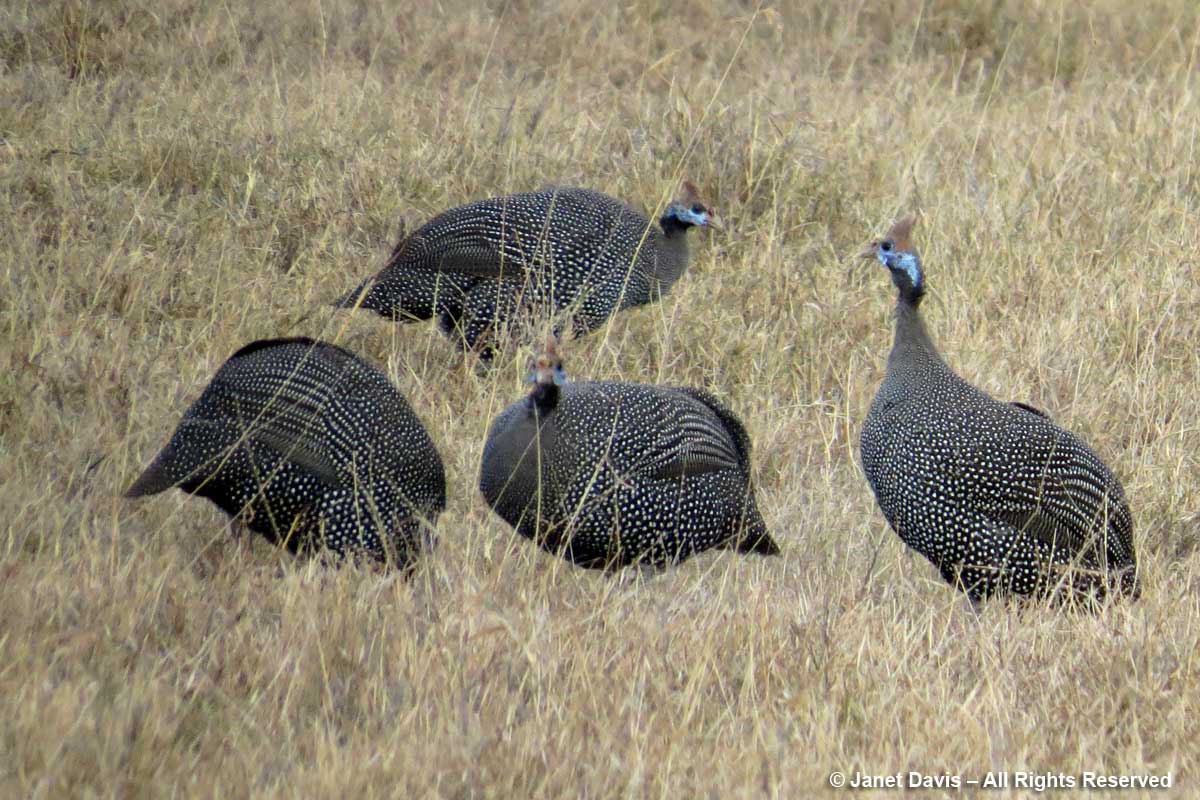 Something about the way the gazelles are acting piques Albert’s curiosity.
Something about the way the gazelles are acting piques Albert’s curiosity.
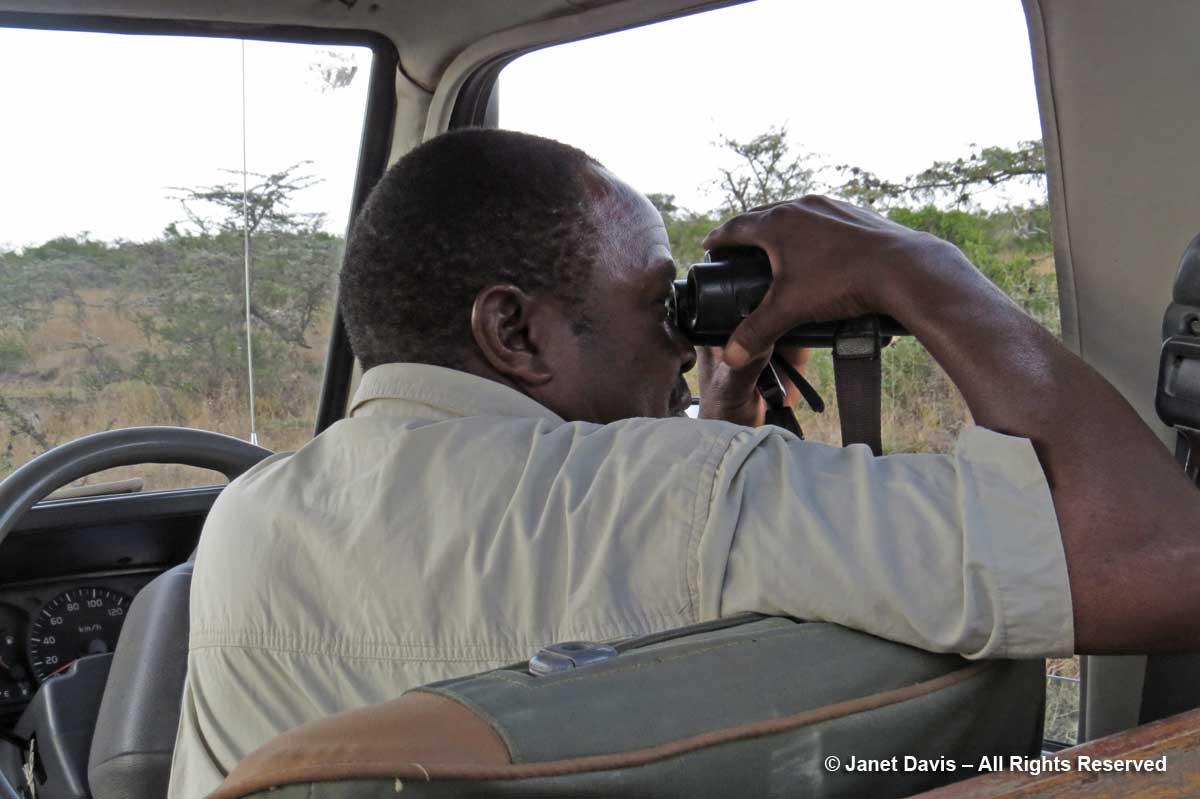 His professional instinct is rewarded when he spots a lone cheetah (Acinonyx jubatus) ambling away from us.
His professional instinct is rewarded when he spots a lone cheetah (Acinonyx jubatus) ambling away from us. 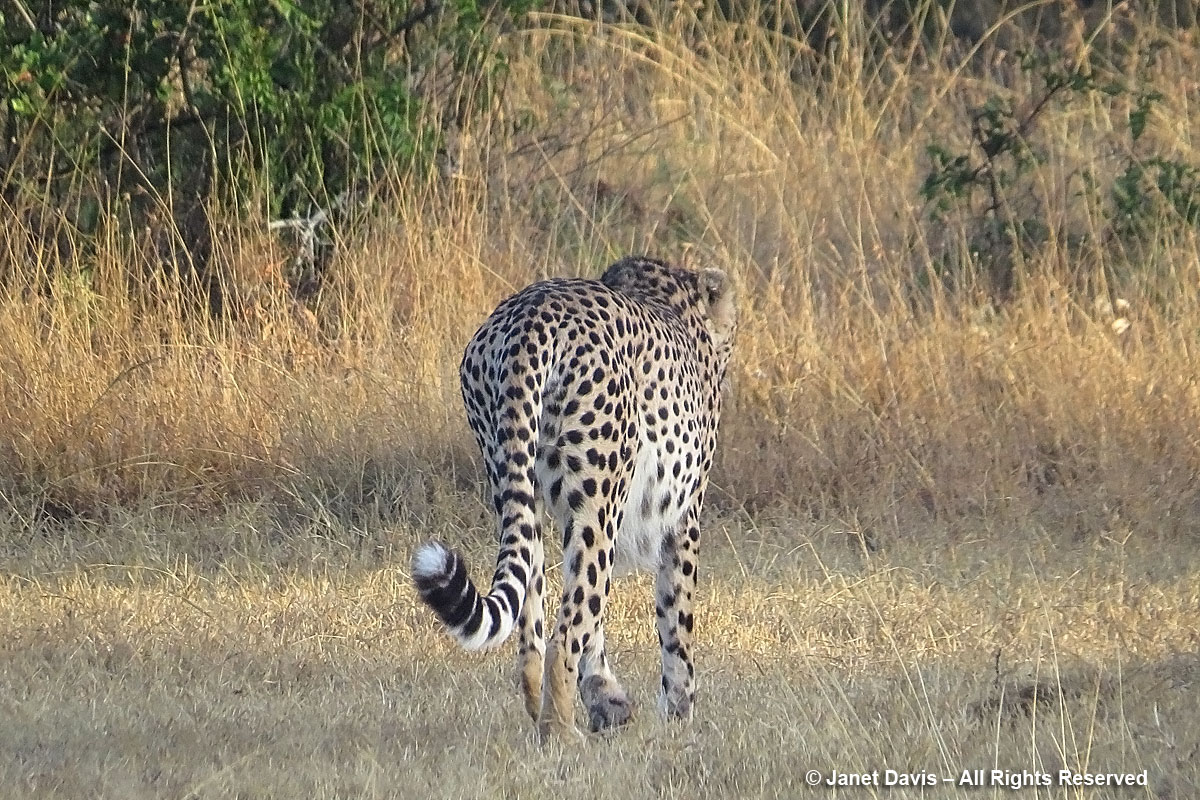 We follow it, then lose it.
We follow it, then lose it.
But somehow, with some tracker’s sixth sense, Albert finds it resting in the grasses amidst eucleas and whistling thorns. He radios the other Kicheche van with the two guys from San Francisco, and like some human GPS map, carefully explains our location to the driver. Soon they join us and we quietly sit and observe this beautiful big cat. But since he doesn’t seem anxious to move, we decide to press on, backing out through the grasses and heading down the road.
Then Albert points to the top of an acacia, where a sweet little lilac-breasted roller (Coracias caudatus) sits in the morning sun. I’m so excited! This is one of the “must-see” birds for safari-going ornithologists.
A little further, two female waterbucks (Kobus ellipsiprymnus) stop their grazing and stare at us.
Down the road, we spot a secretary bird (Sagittarius serpentarius), no doubt hunting for snakes, their principal food (and reflected in their species name). What great feathers!
And a little black-backed jackal (Canis mesomelas).
We drive past trees, like the one at the top of the photo below, festooned with myriad species of birds. This one has grey-crowned cranes (Balearica regulorum) at right and spoonbills (Platalea alba), sacred ibis and hadada ibis at left. Below are closeup shots of sacred ibis (Threskiornis ethiopicus), left and hadada ibis, right (Bostrychia hagedash).
Next, we come upon a large troop of olive baboons (Papio anubis) just descending from the big trees where they’ve spent the night.
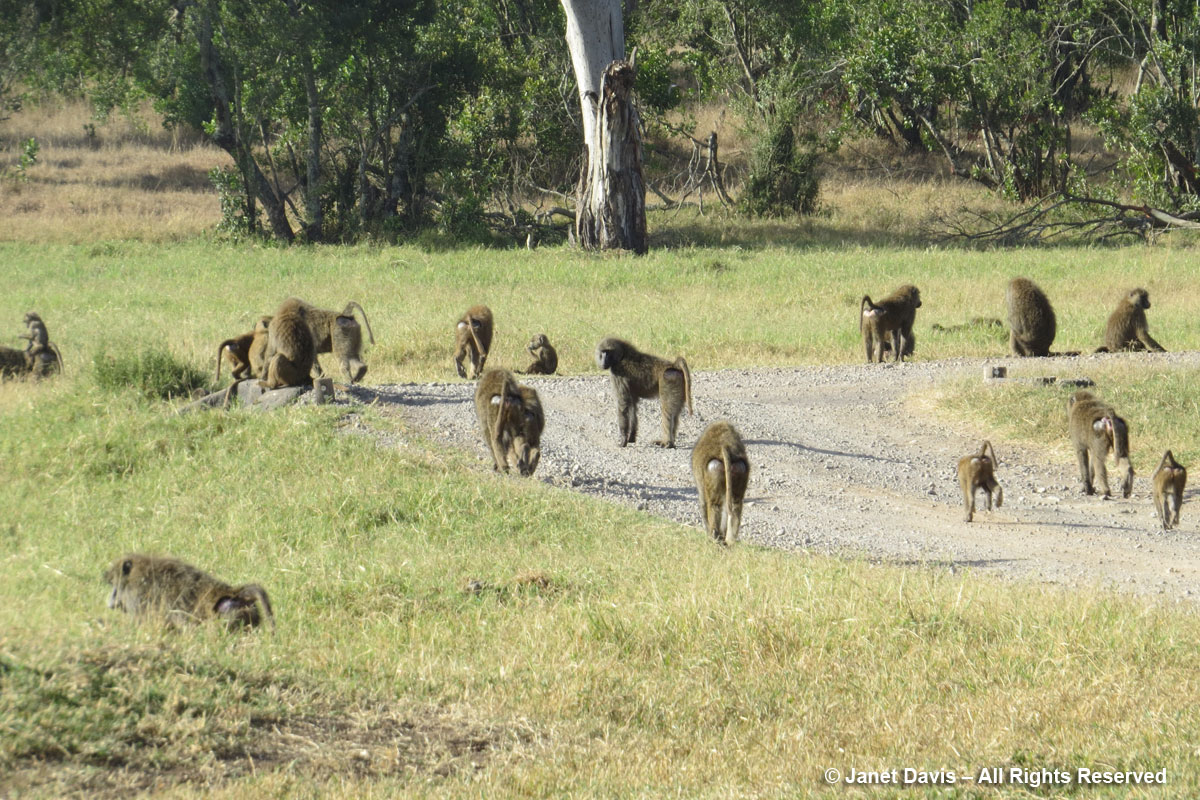 Infant baboons learn to hang onto their mother’s fur at about 1 week.
Infant baboons learn to hang onto their mother’s fur at about 1 week.
We pass a pond where the African spoonbill (Platalea alba) is fishing.
A little further on, a migratory European white stork (Circonia circonia) watches us carefully. It will fly back to its breeding grounds in Europe soon.
A male impala (Aepyceros melampus) gathers his harem together protectively as we drive by……
…while the common eland (Taurotragus oryx) pays us no heed whatsoever.
A pair of southern white rhinoceros (Ceratotherium simum simum) keep an eye on us. Note the square lips that give it its other common name, the “southern square-lipped rhinoceros). 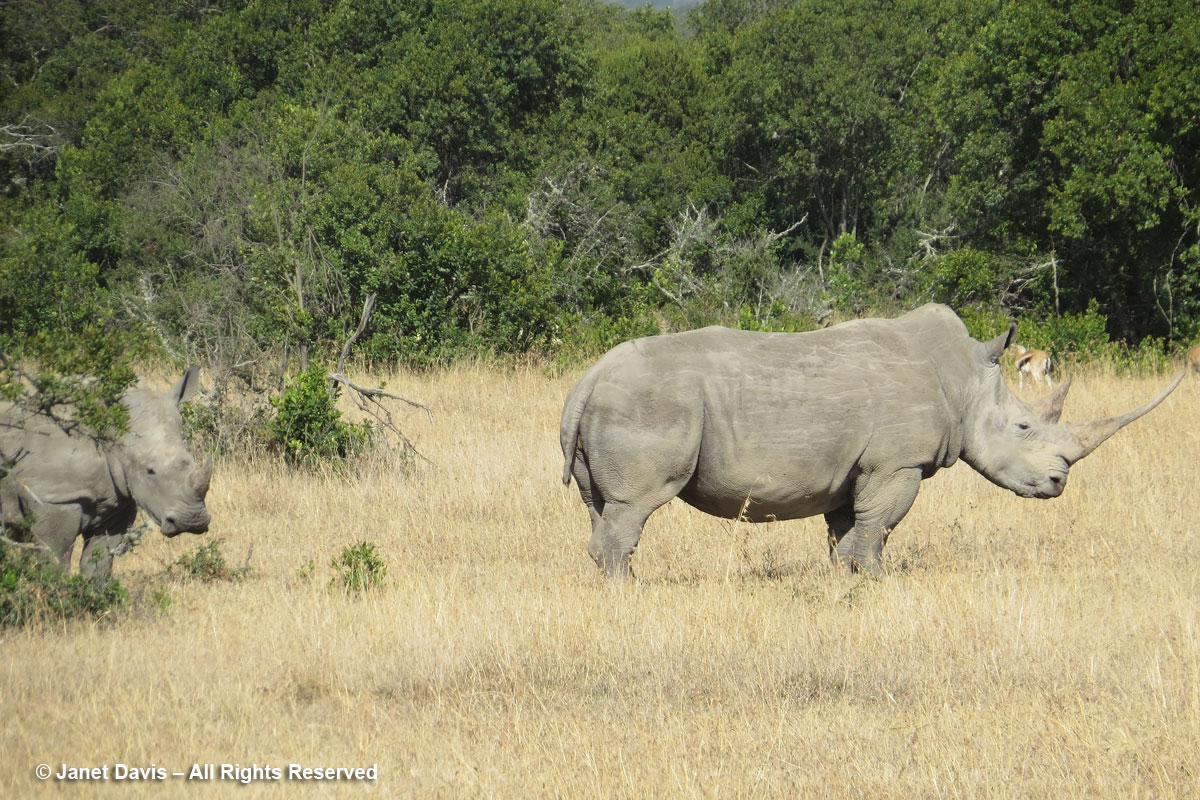
Ol Pejeta Conservancy is also home to the only remaining northern white rhinos (Ceraotherium simum cottoni) in the world: three individuals for whom breeding attempts have so far failed, given the age and health of the two females. A December 2015 meeting in Austria explored options of frozen tissue and spermatozoa and other technologies that might help conserve this subspecies in the face of its imminent extinction.
We watch a Jackson’s hartebeest (Alcephalus bucelaphus lelwel) who’s watching us back!
We’ve been out a few hours and our tummies are telling us it’s time to eat. Albert finds a clearing and removes the back floorboard from the van, which transforms itself, presto, into a picnic table! He sets up three camp stools and brings out a basket filled with a sumptuous assortment of food, with juice and coffee.
I set my camera on the back seat and hit the timer button. Click!
After breakfast, we spot a black rhinoceros (Diceros bicornis) and her calf. Note the red-billed oxpecker on the mother. From the starling family, its preferred diet is blood and blood-engorged ticks from the skin of these big mammals.
It’s late morning and we’re ready to head back to the camp for a rest before lunch. As we drive, Albert points out the lion’s preferred food – a baby gazelle playing a little too far from its mother.
Back at camp, we put our feet up for a while. Then it’s lunch time. Sonja Webb loves buying cookbooks and having her cooks try out all kinds of gourmet recipes. So we’re treated to a delicious homemade pizza and salad……
…. and grilled pineapple with homemade peanut ice cream for dessert! Mmmmm…
At 4 o’clock, we’re back out on the savannah, where we come across a herd of Cape or African buffalo ( Syncerus caffer). Such grizzled old faces on these beasts.
Then we spot a small group of elephants munching on vegetation. Albert tells us they need to eat 250-300 kilograms a day.
There are lots of common zebras….
…and Albert points out a hybrid zebra, below right, that displays the characteristics of both the common and larger, more rare Grevey’s zebras. I later learn that there are four of these on Ol Pejeta Conservancy.
A giraffe walks gracefully in front of us.
And we spend a lot of time watching families of spotted hyenas (Crocuta crocuta) playing around their den opening.
As the sun is setting, there’s barely enough light to capture this spotted eagle owl (Bubo africanus) roosting on a tree.
Then the sun goes down…..
….. and we head back to camp where there’s a lovely surprise awaiting us. Instead of dining alone at the big table in the main tent, they have set a romantic table for two in our tent, complete with candles, wine, and wildflowers strewn across the tablecloth.
Time for bed. That 5:30 knock at the tent door comes early!
Tune in for Safari-Part 3 in a few days, when we’ll watch a pair of cheetah brothers play with each other on film and visit with Kicheche Laikipia’s resident beekeeper!

